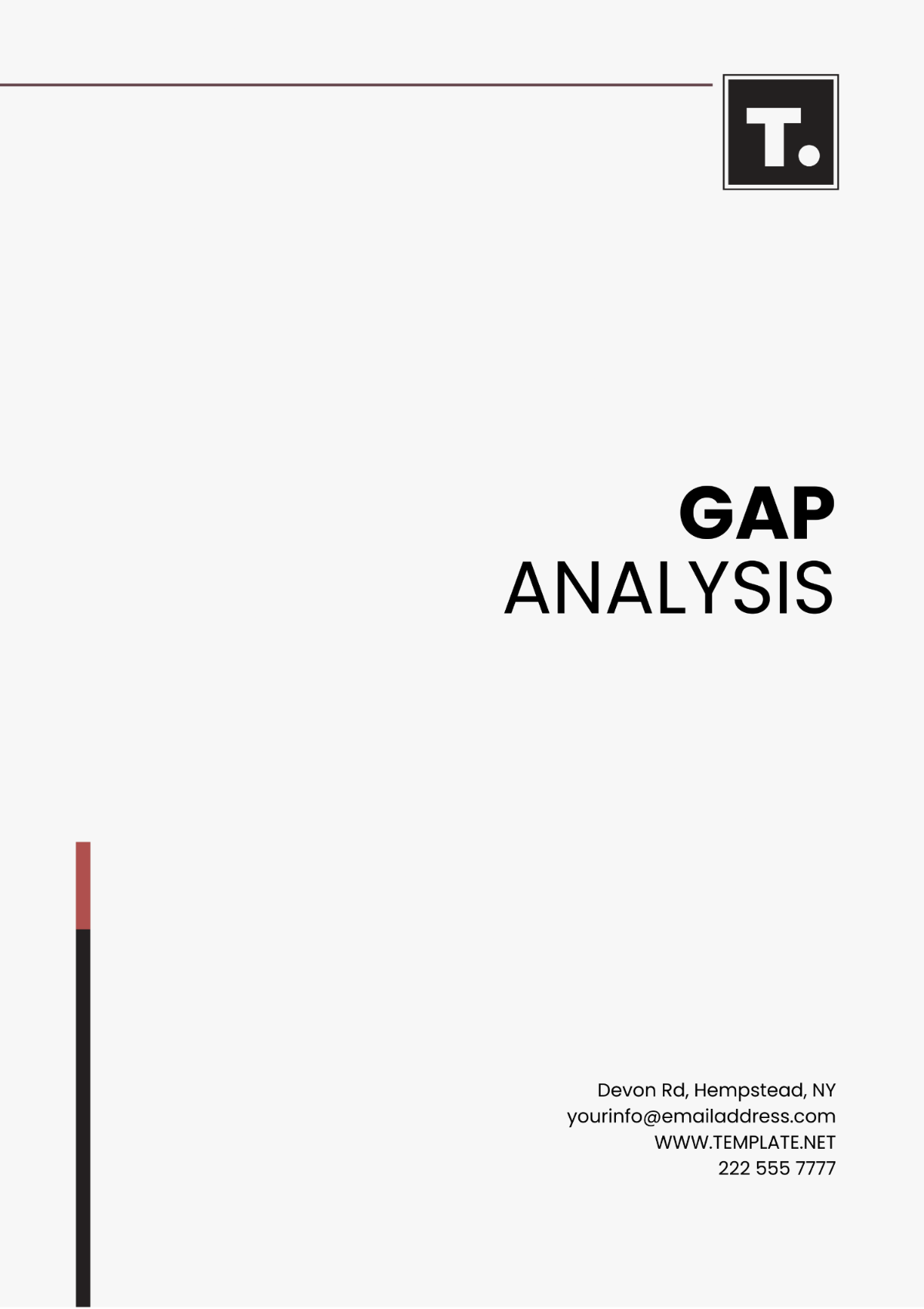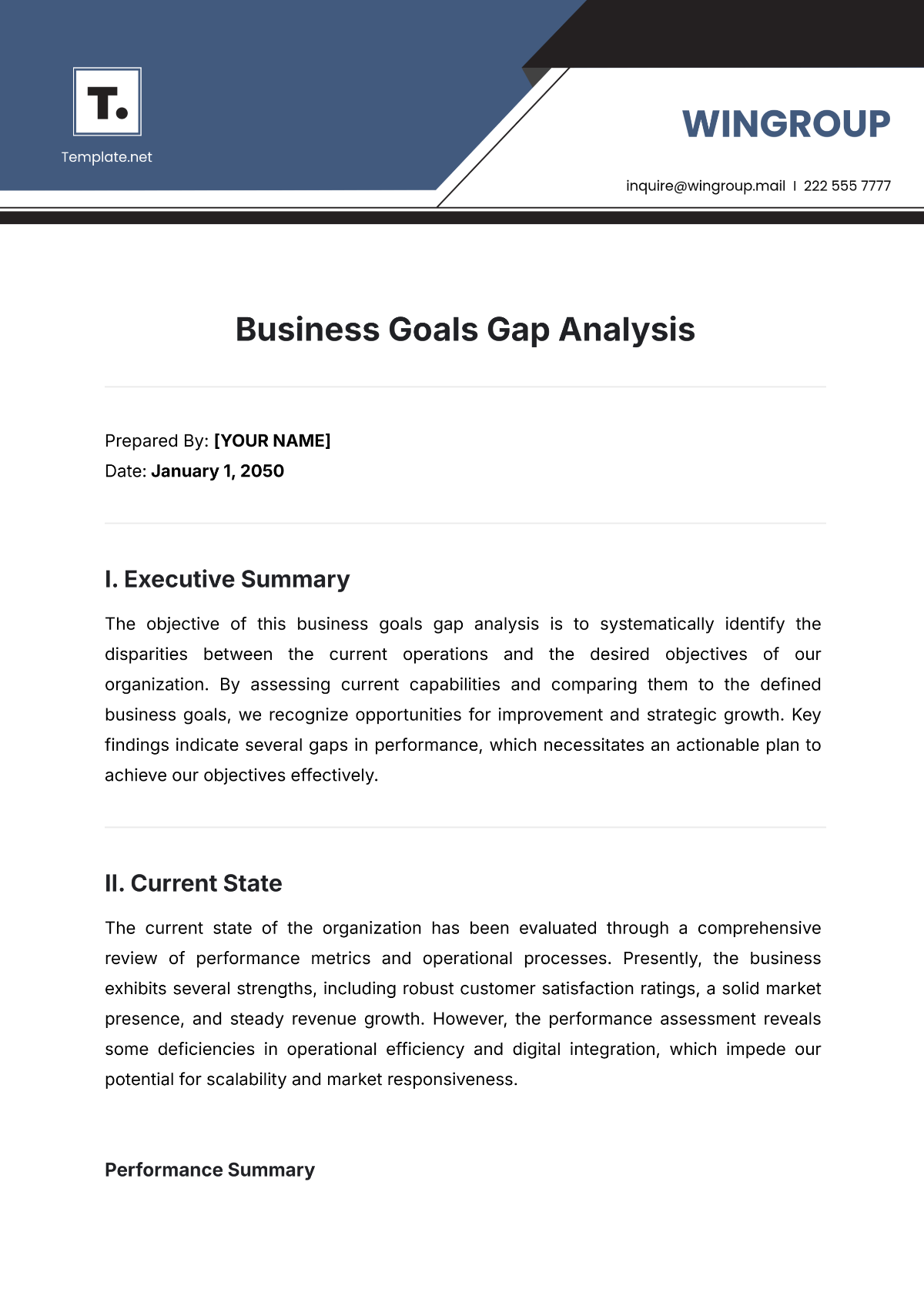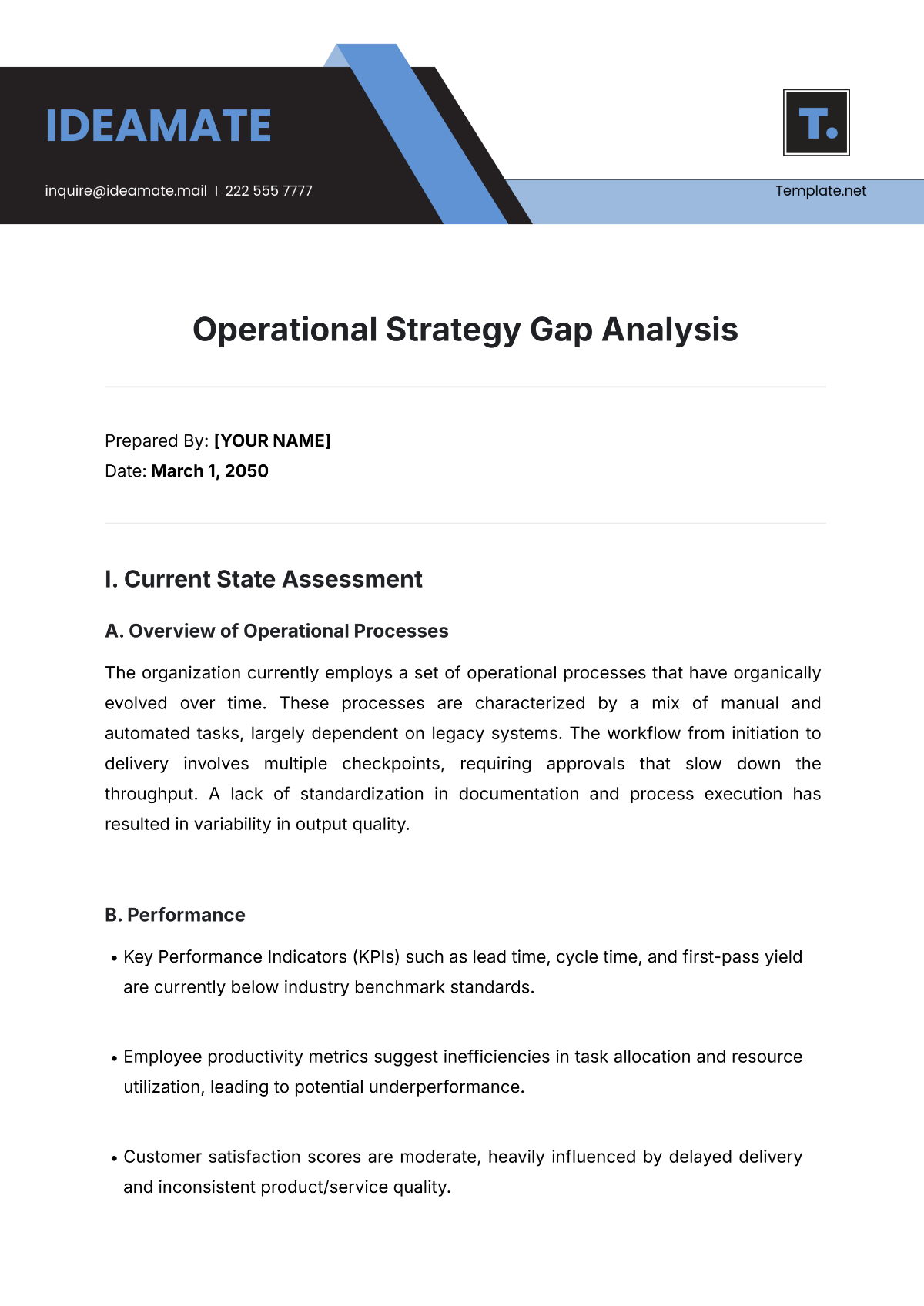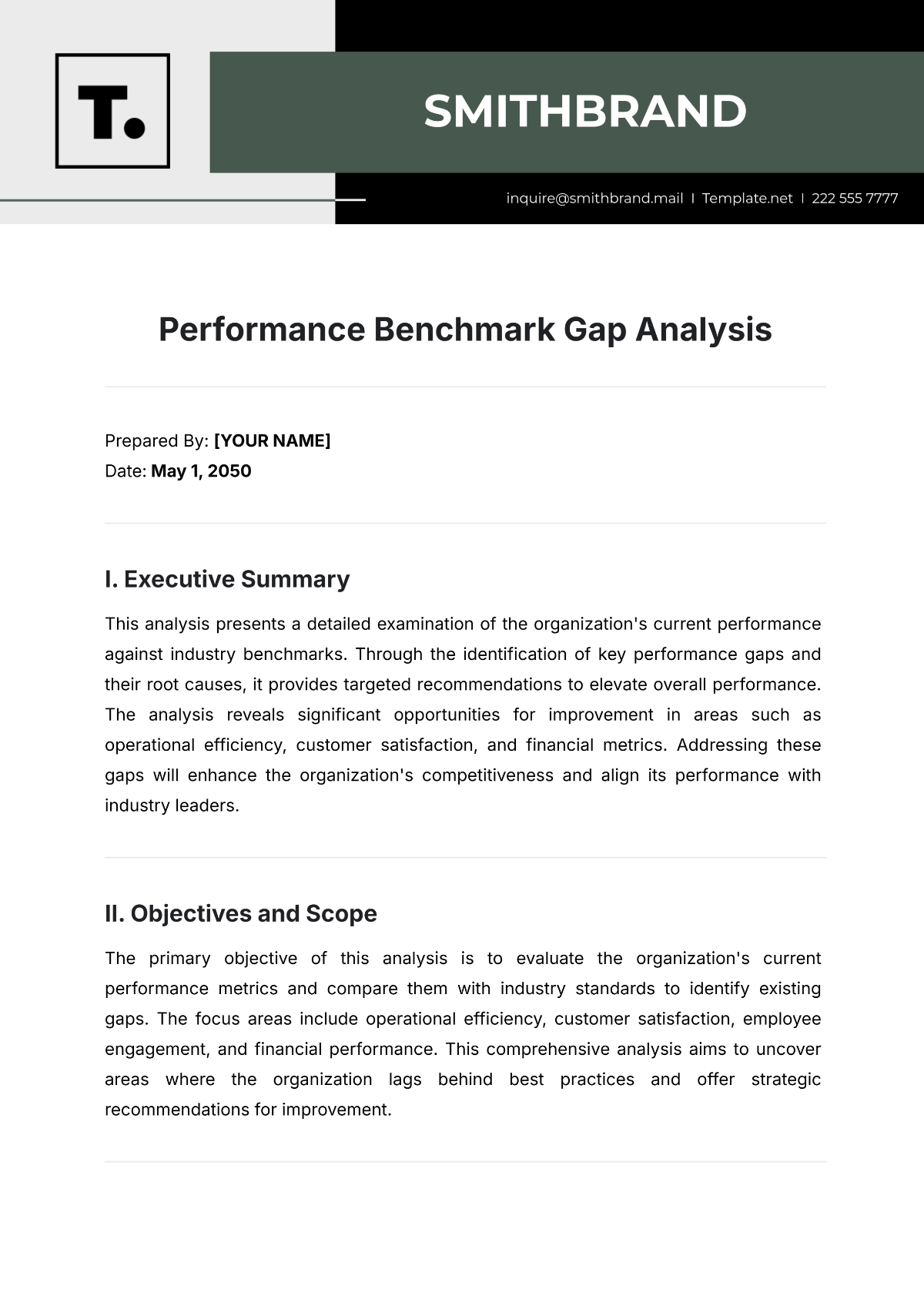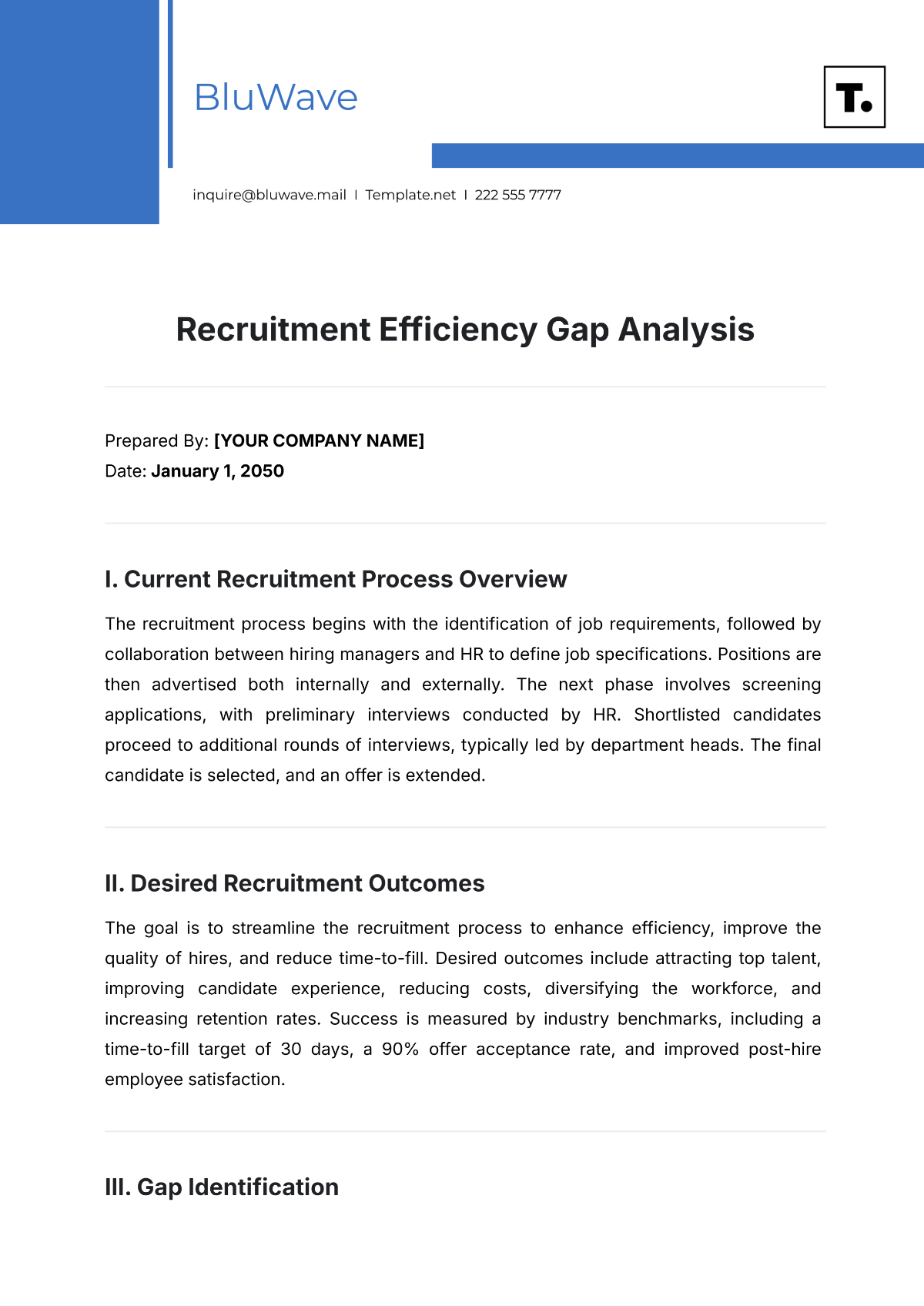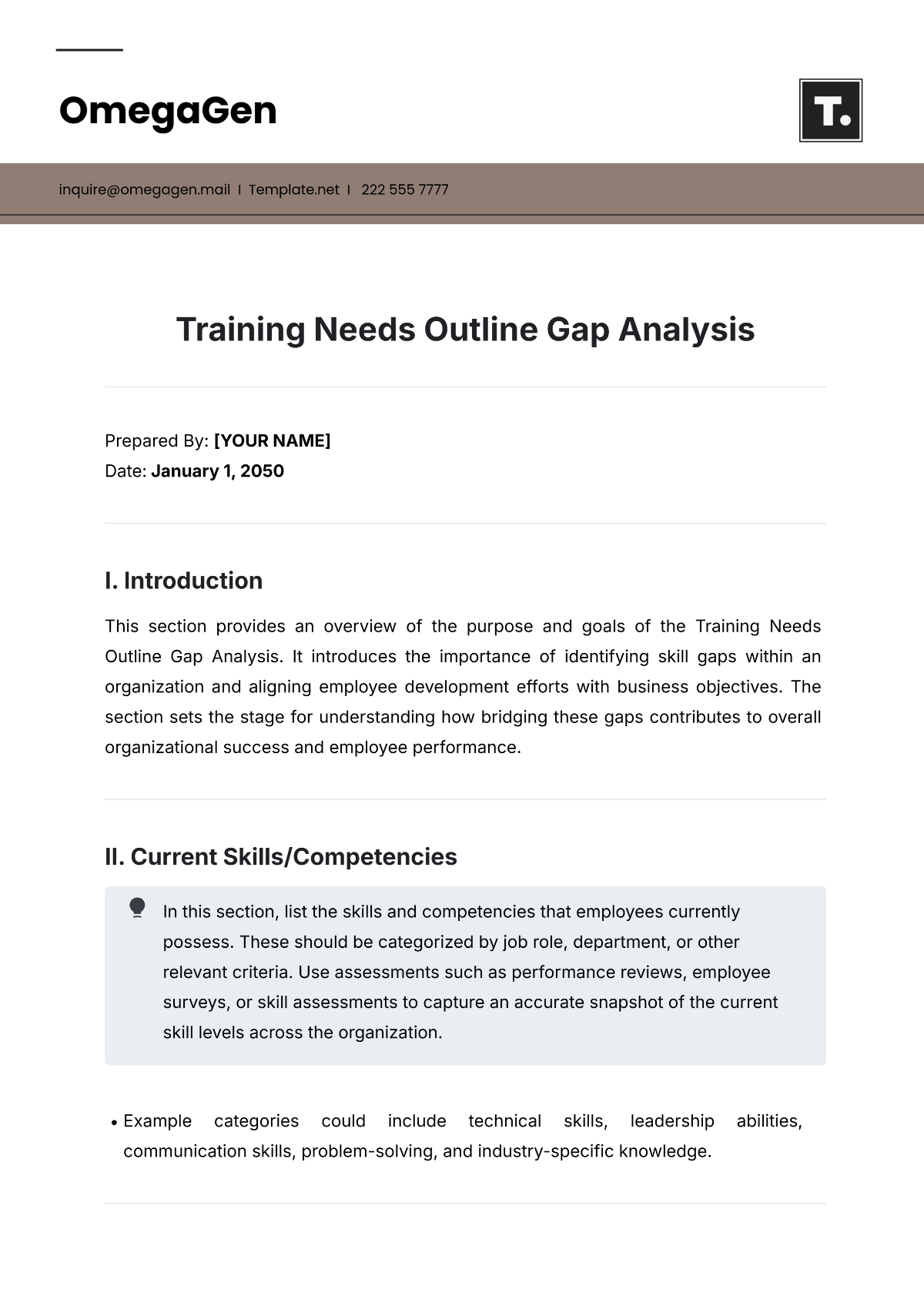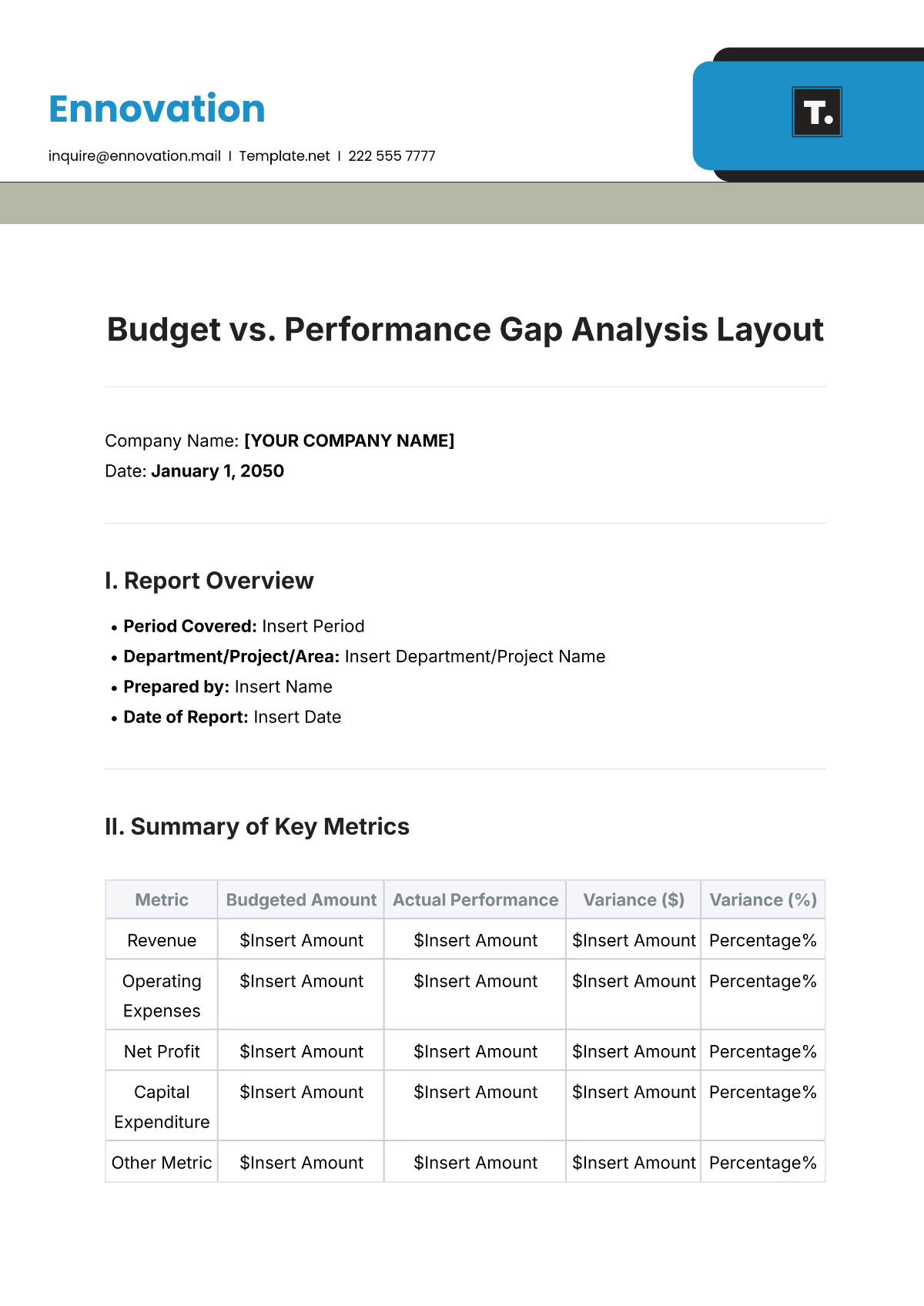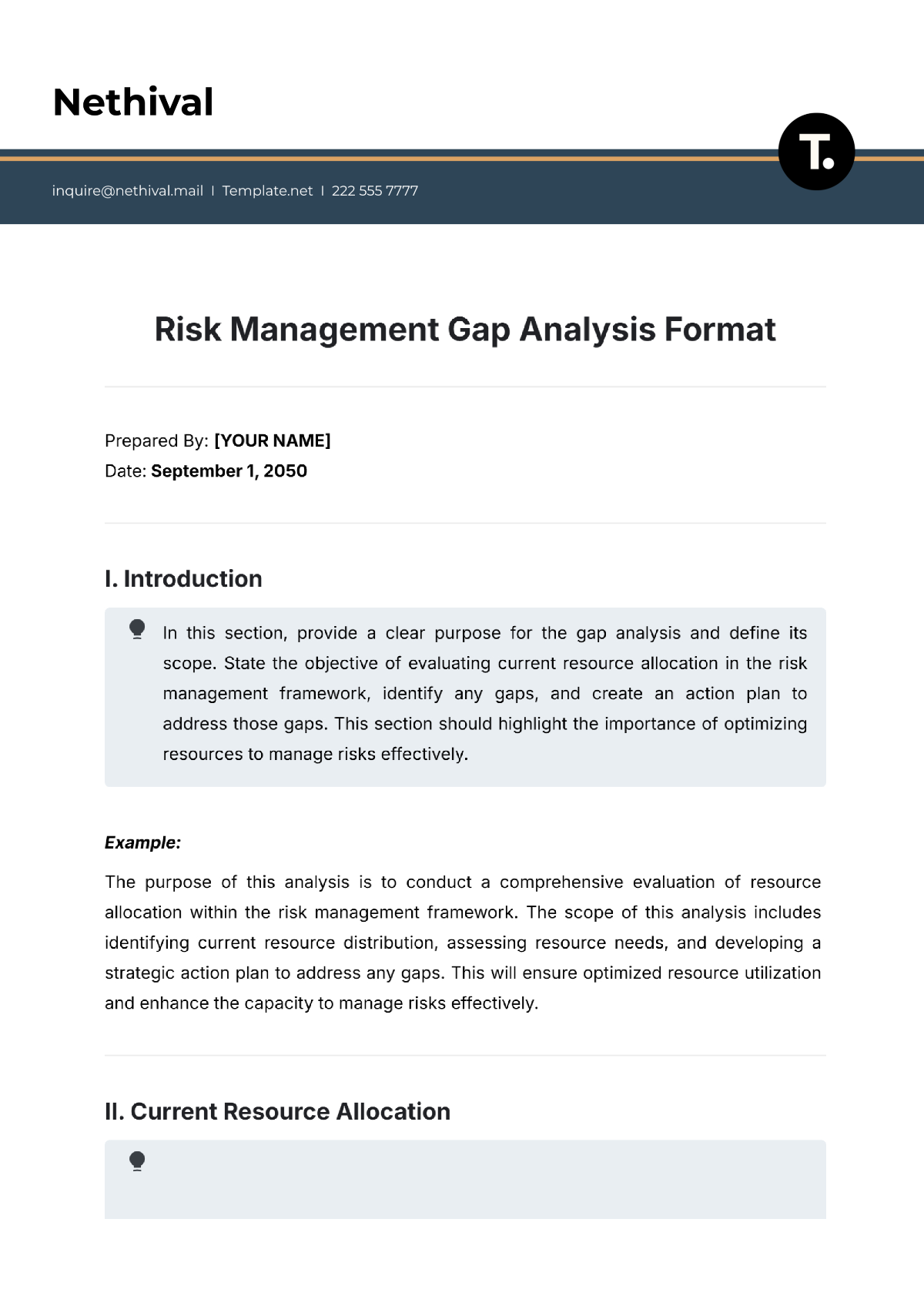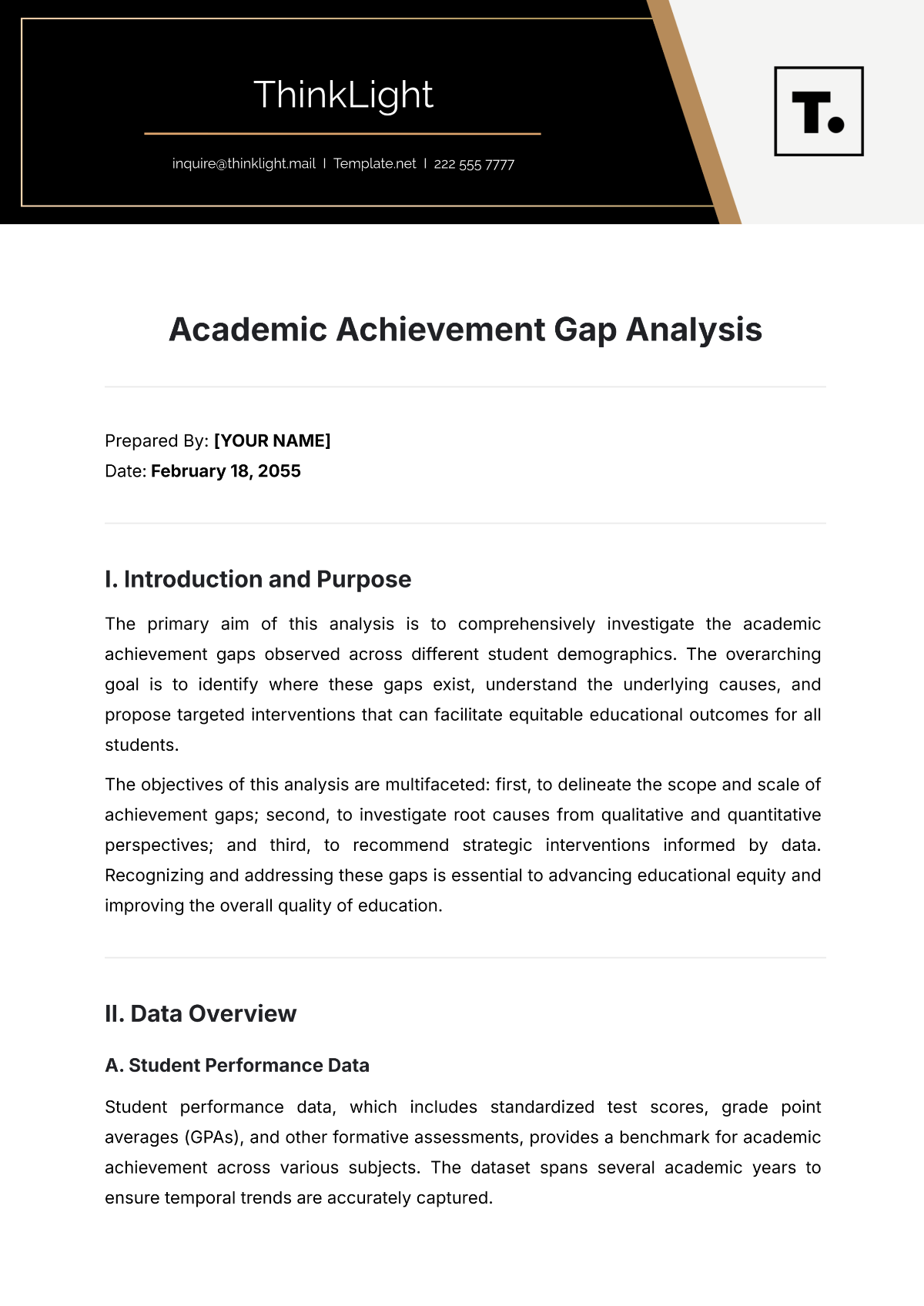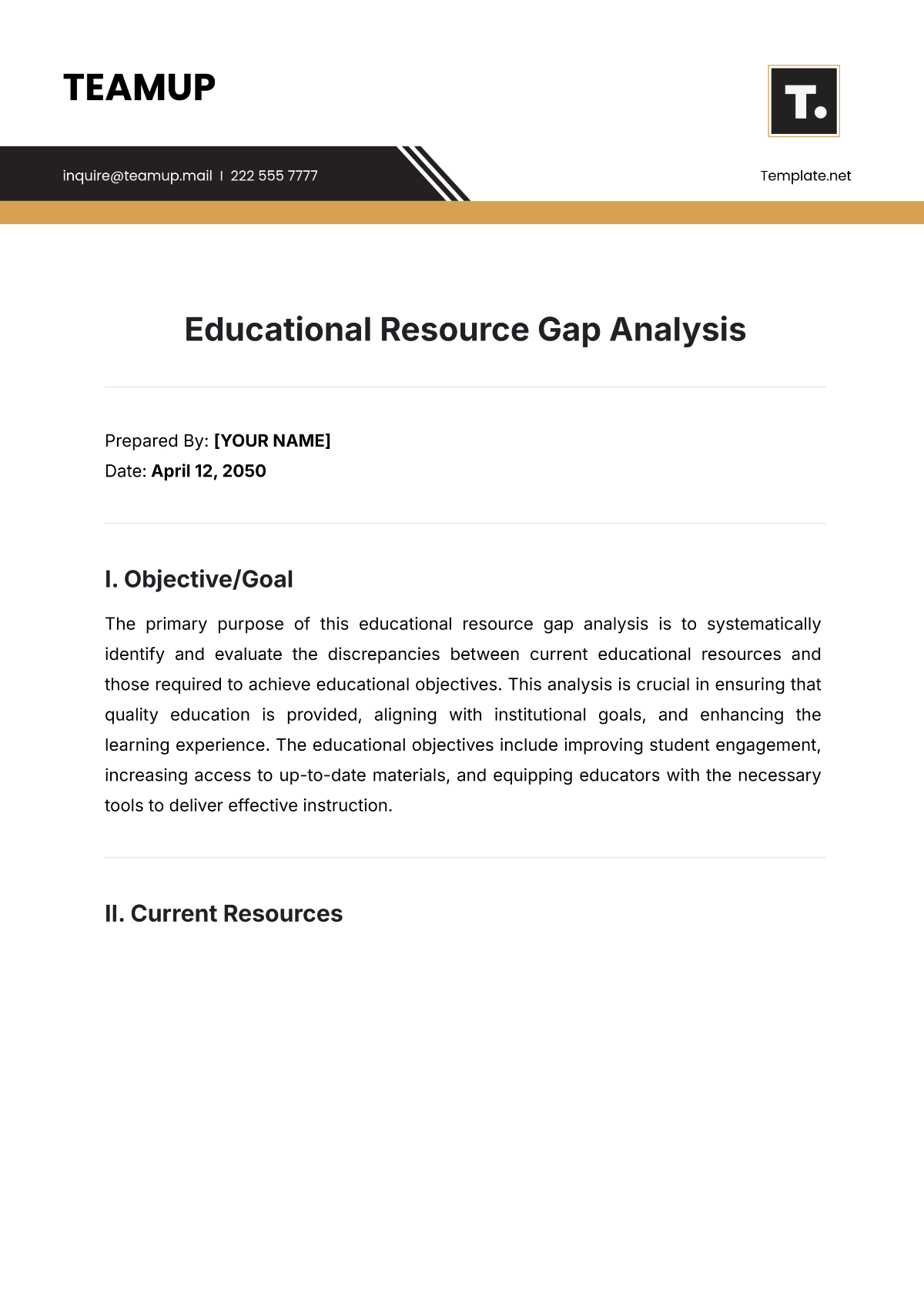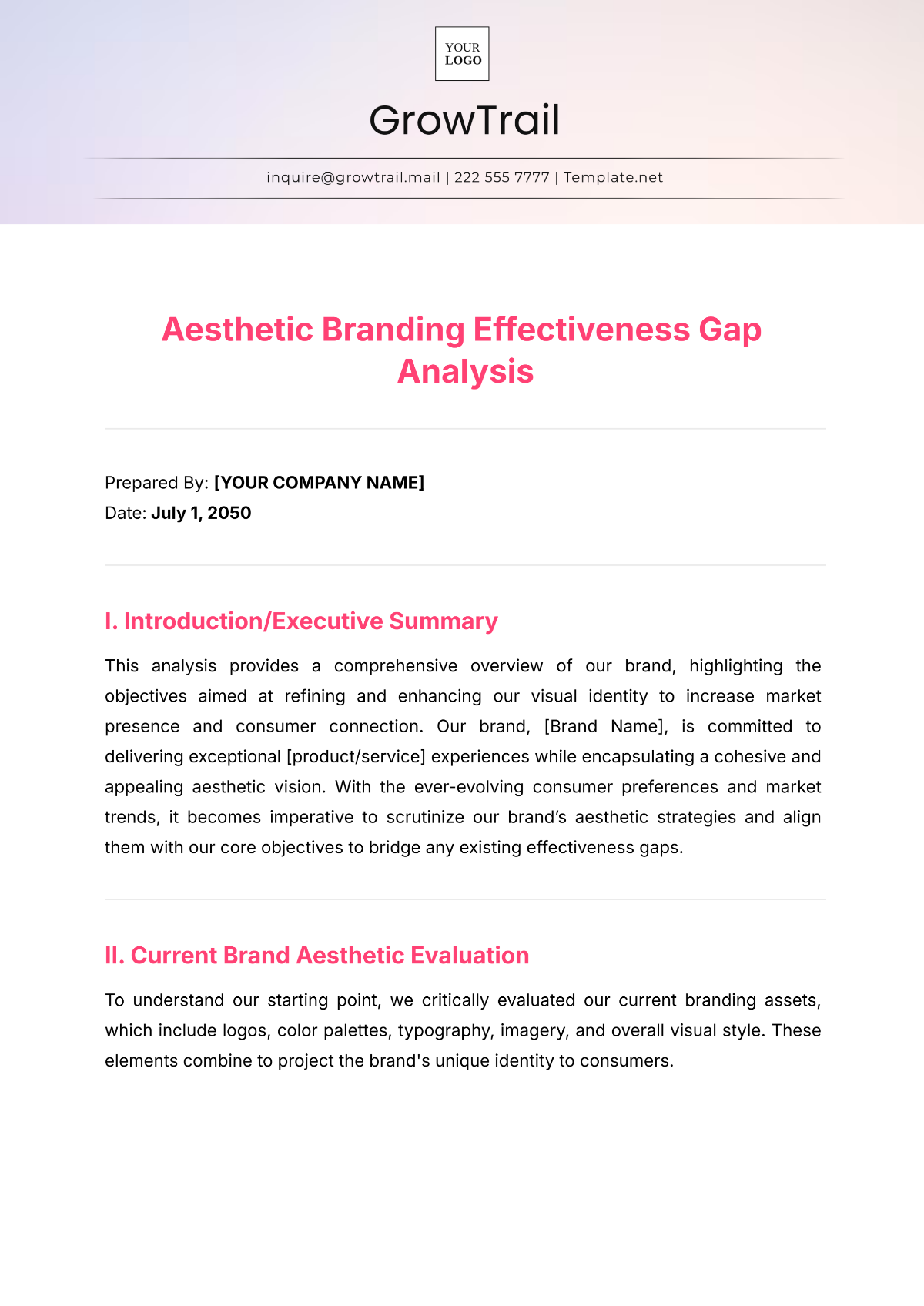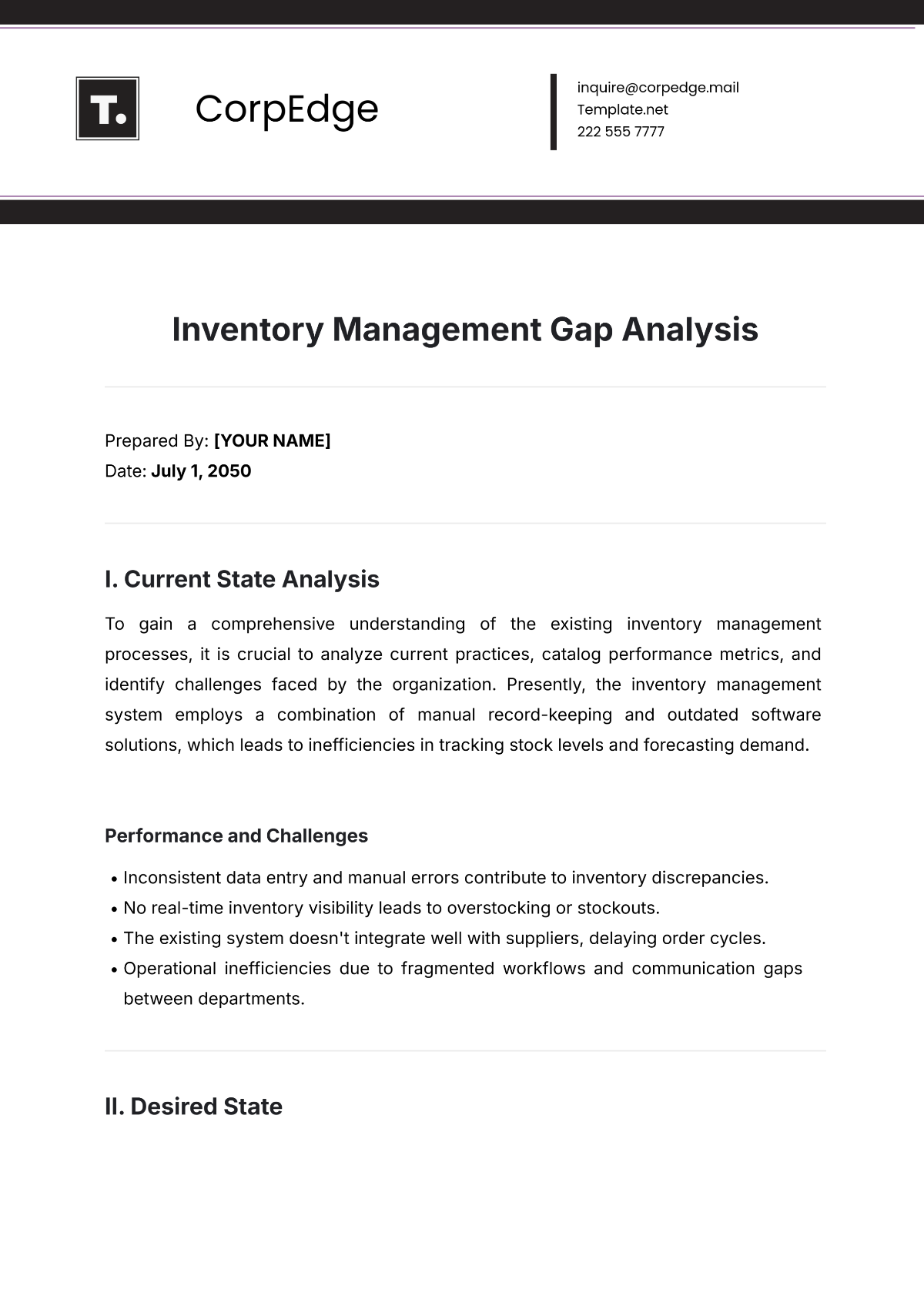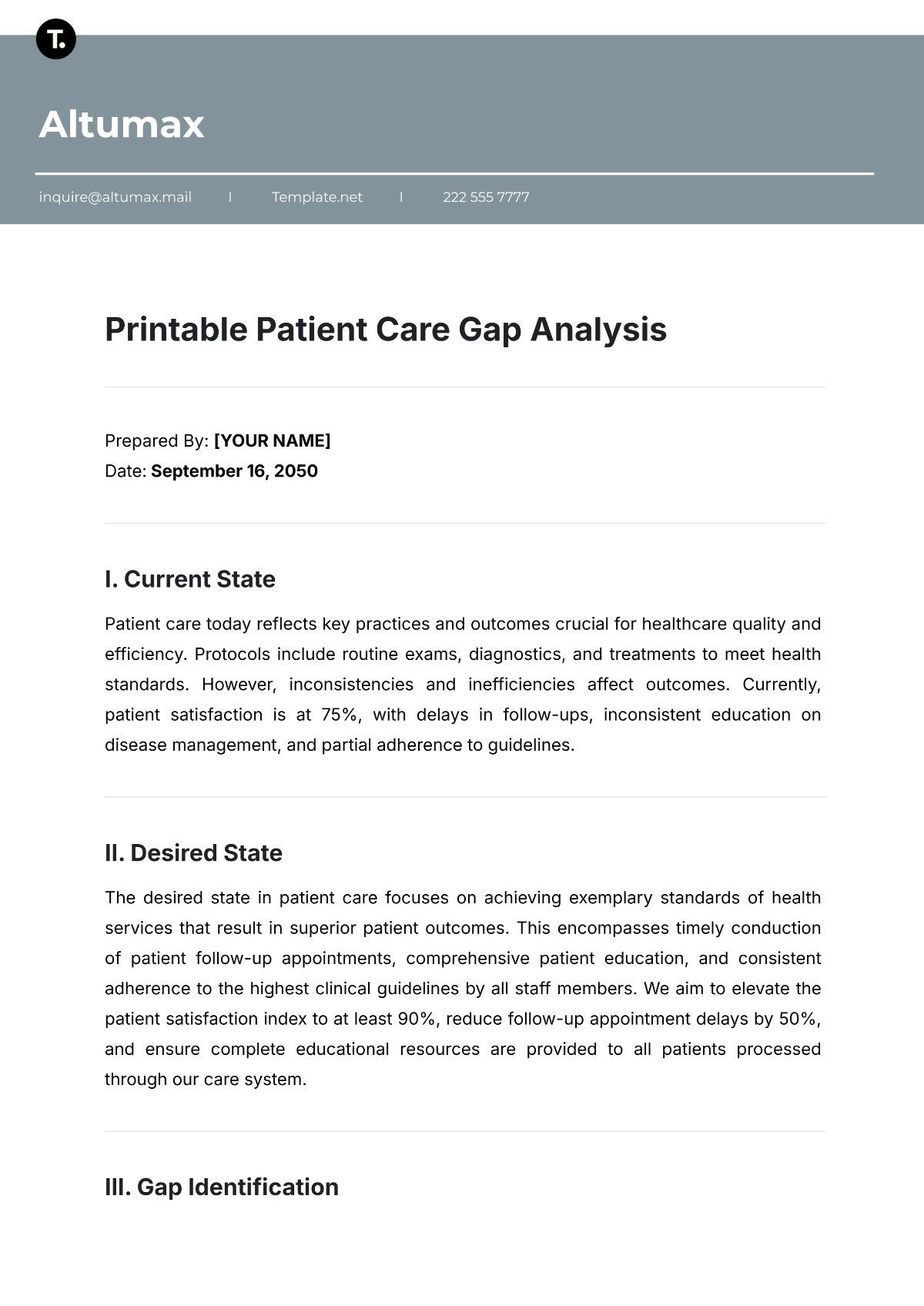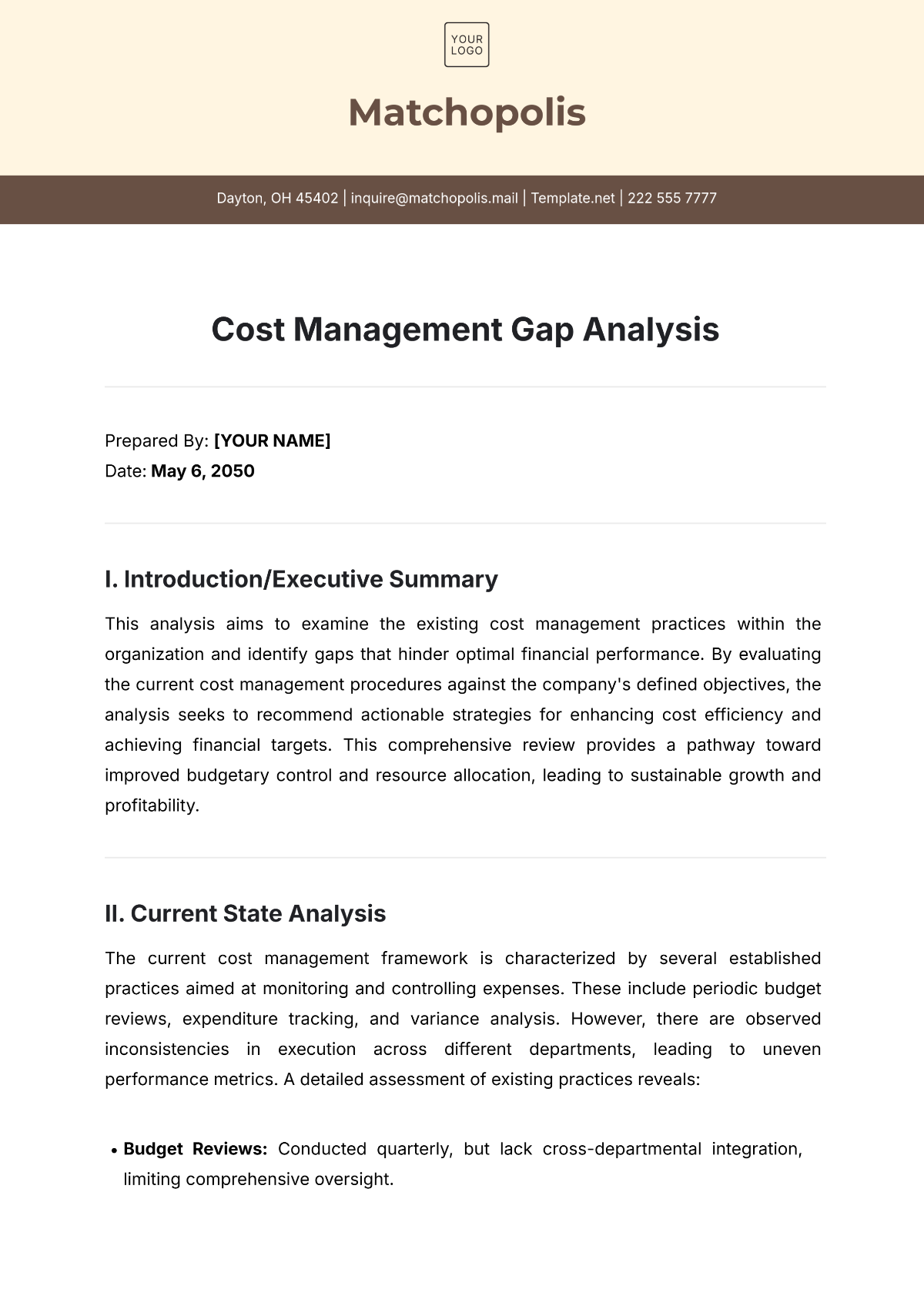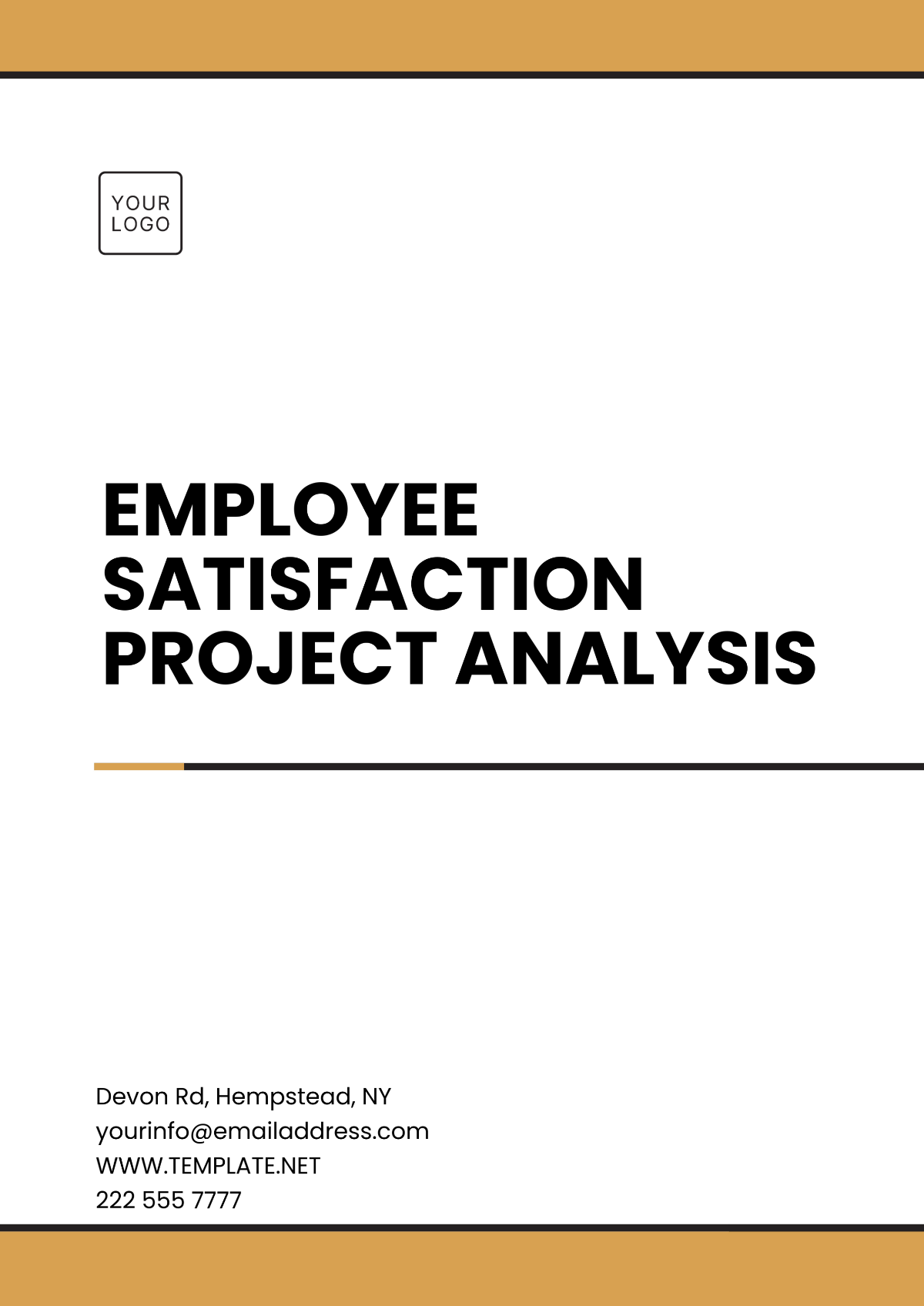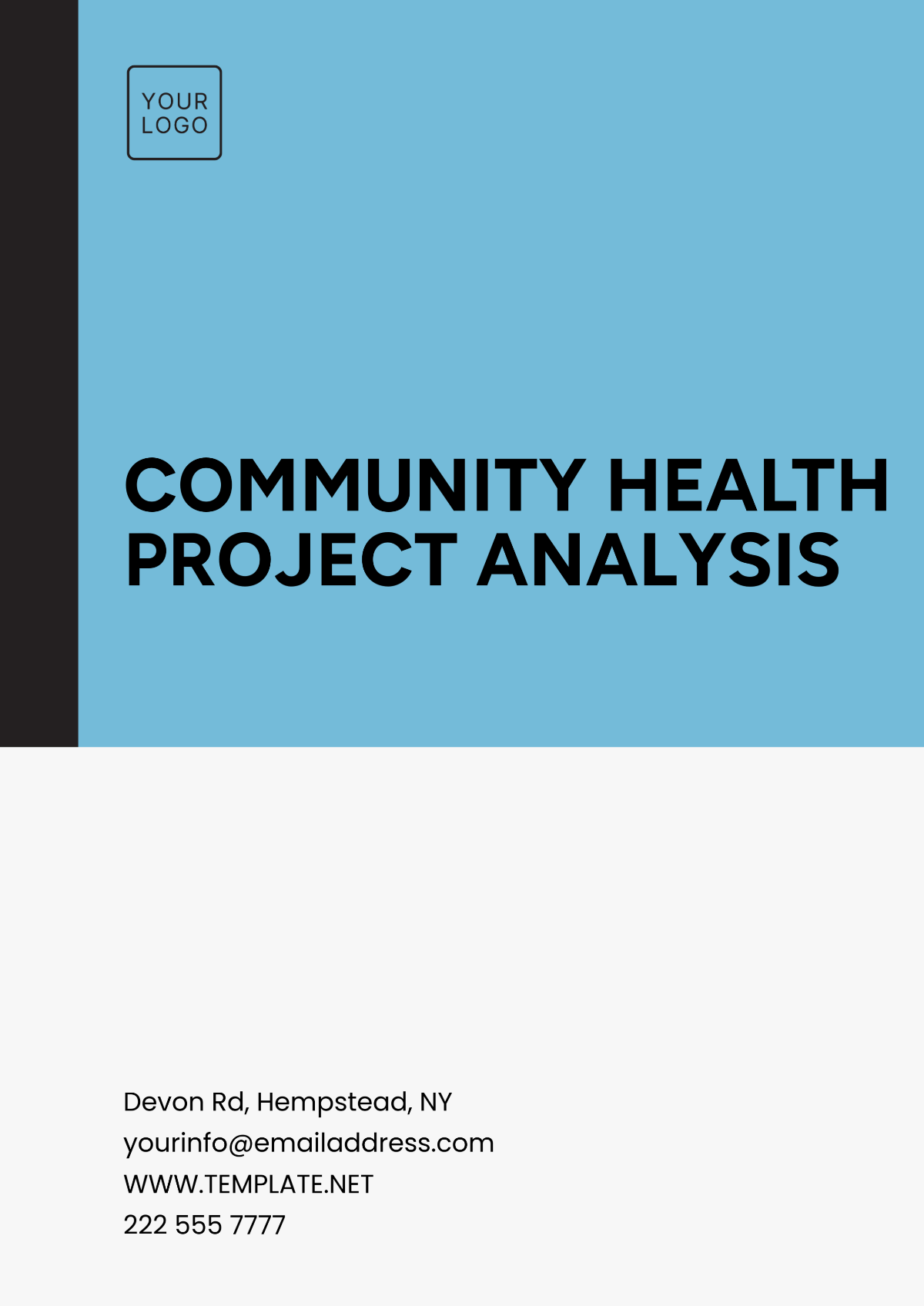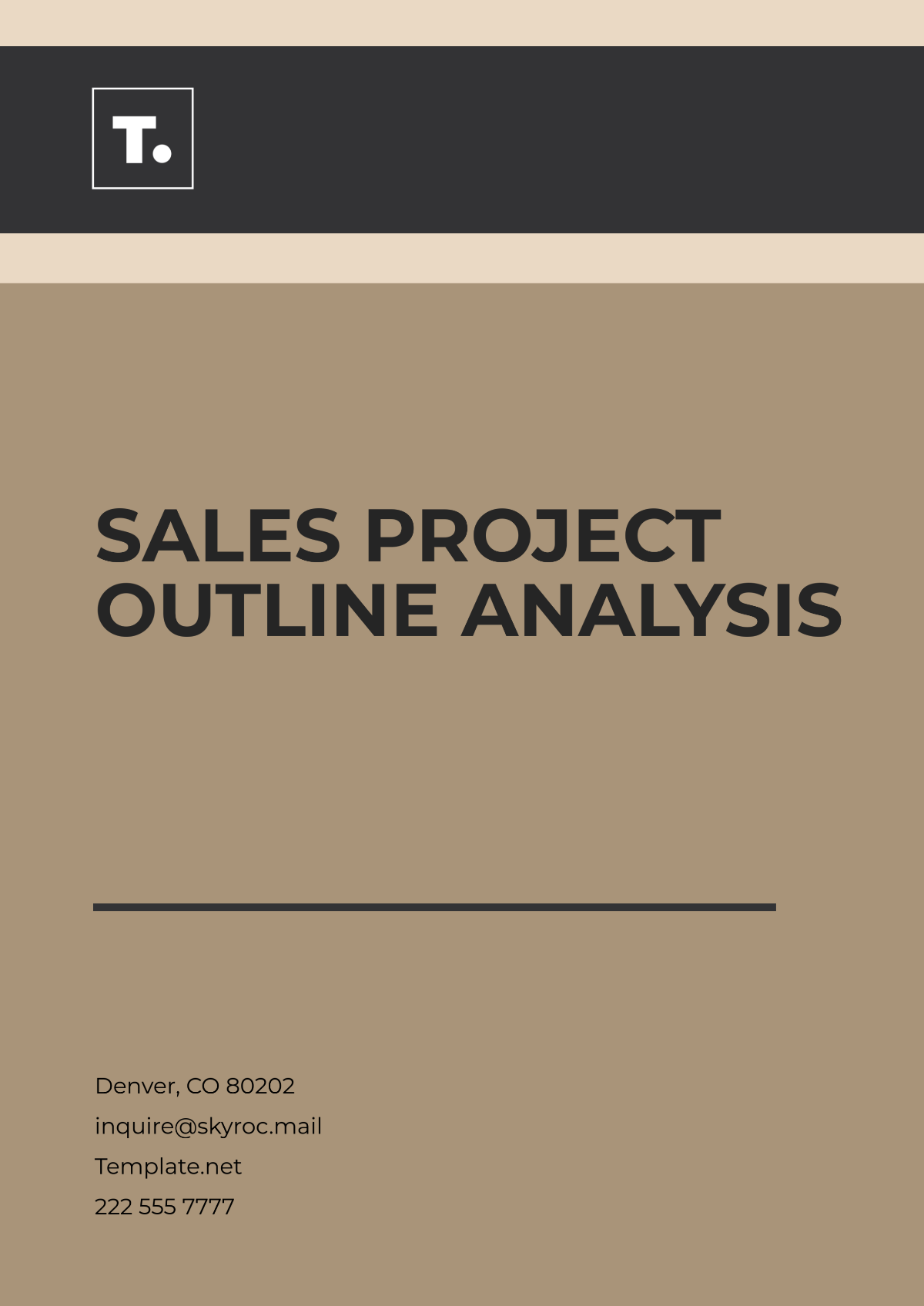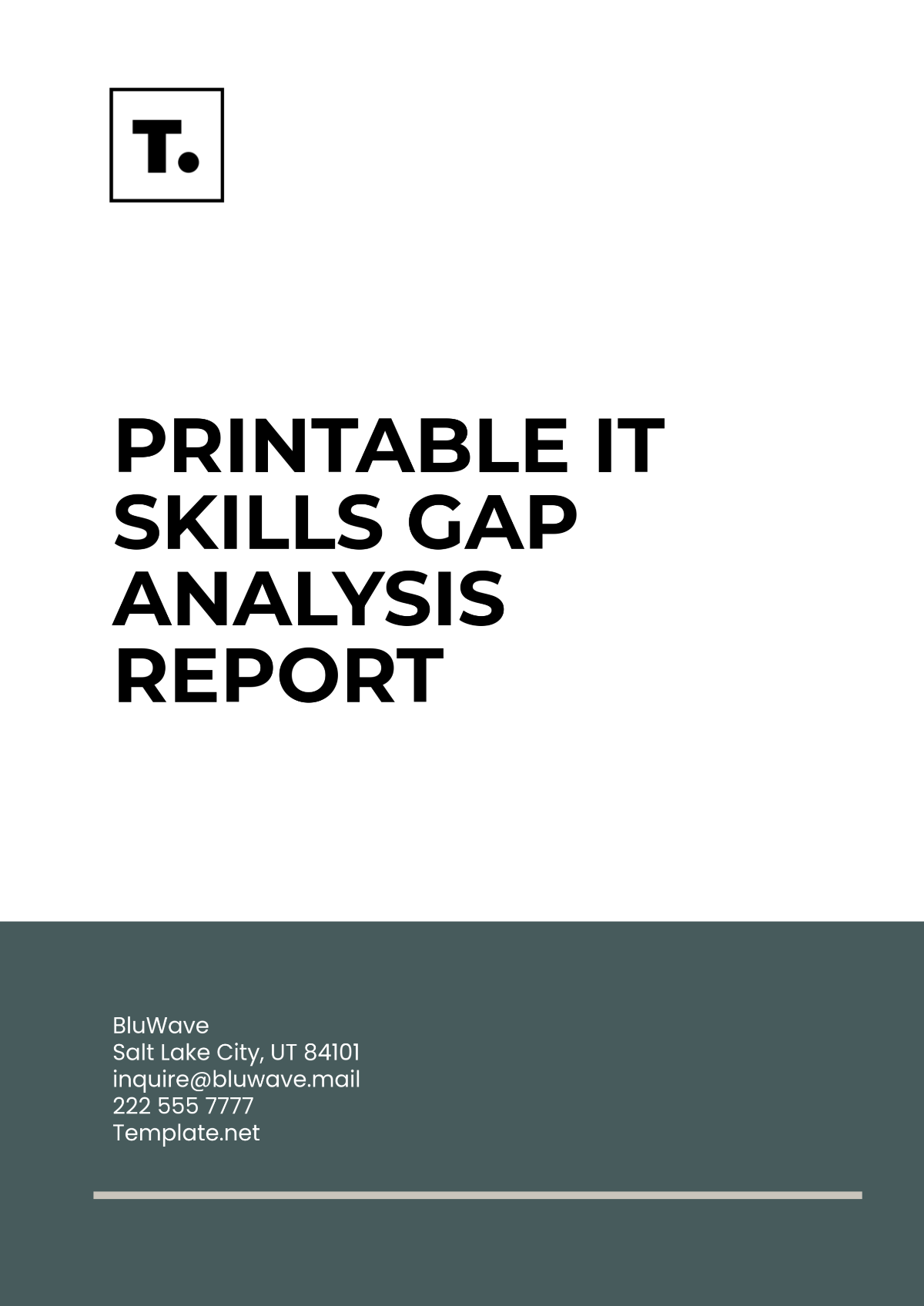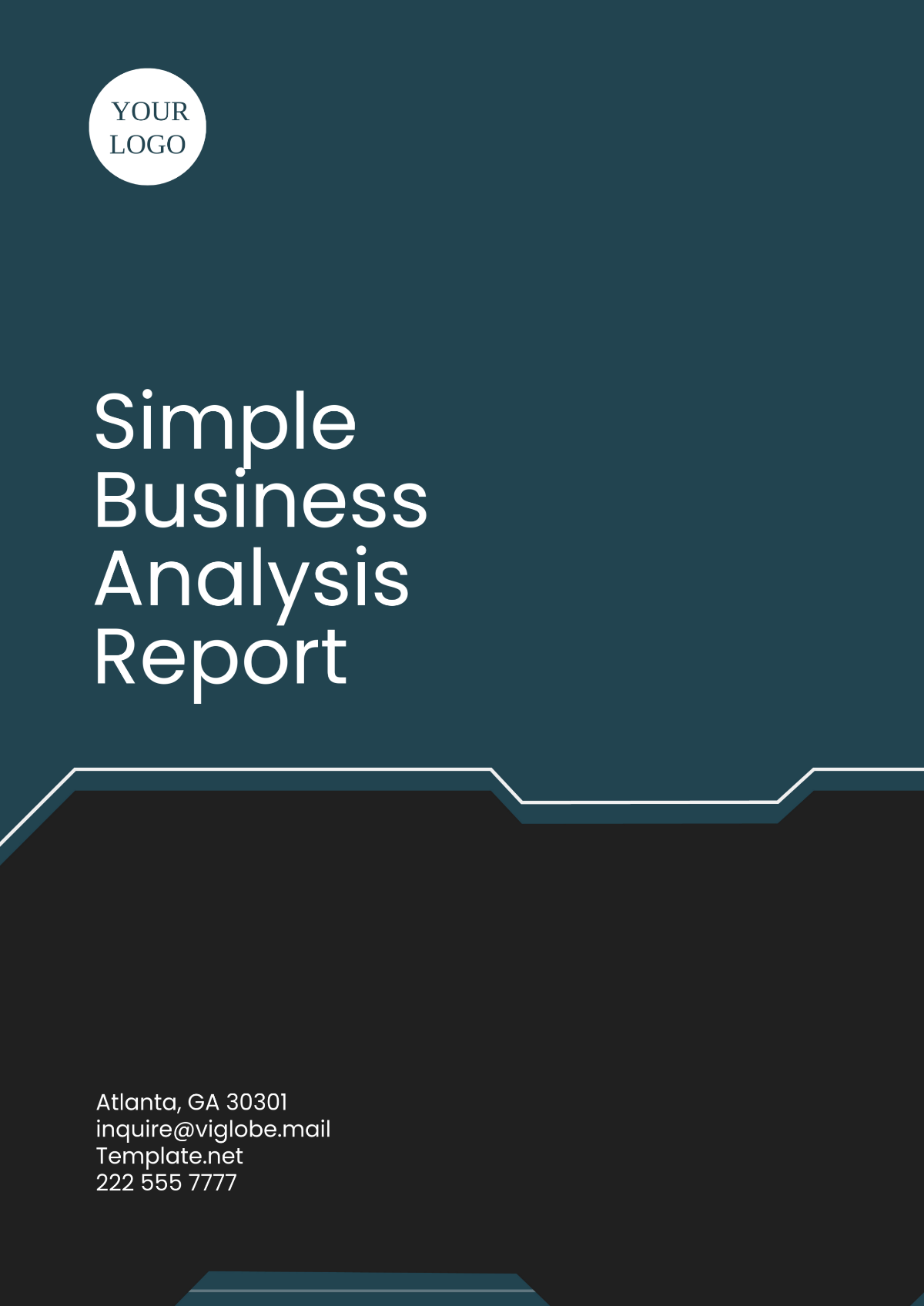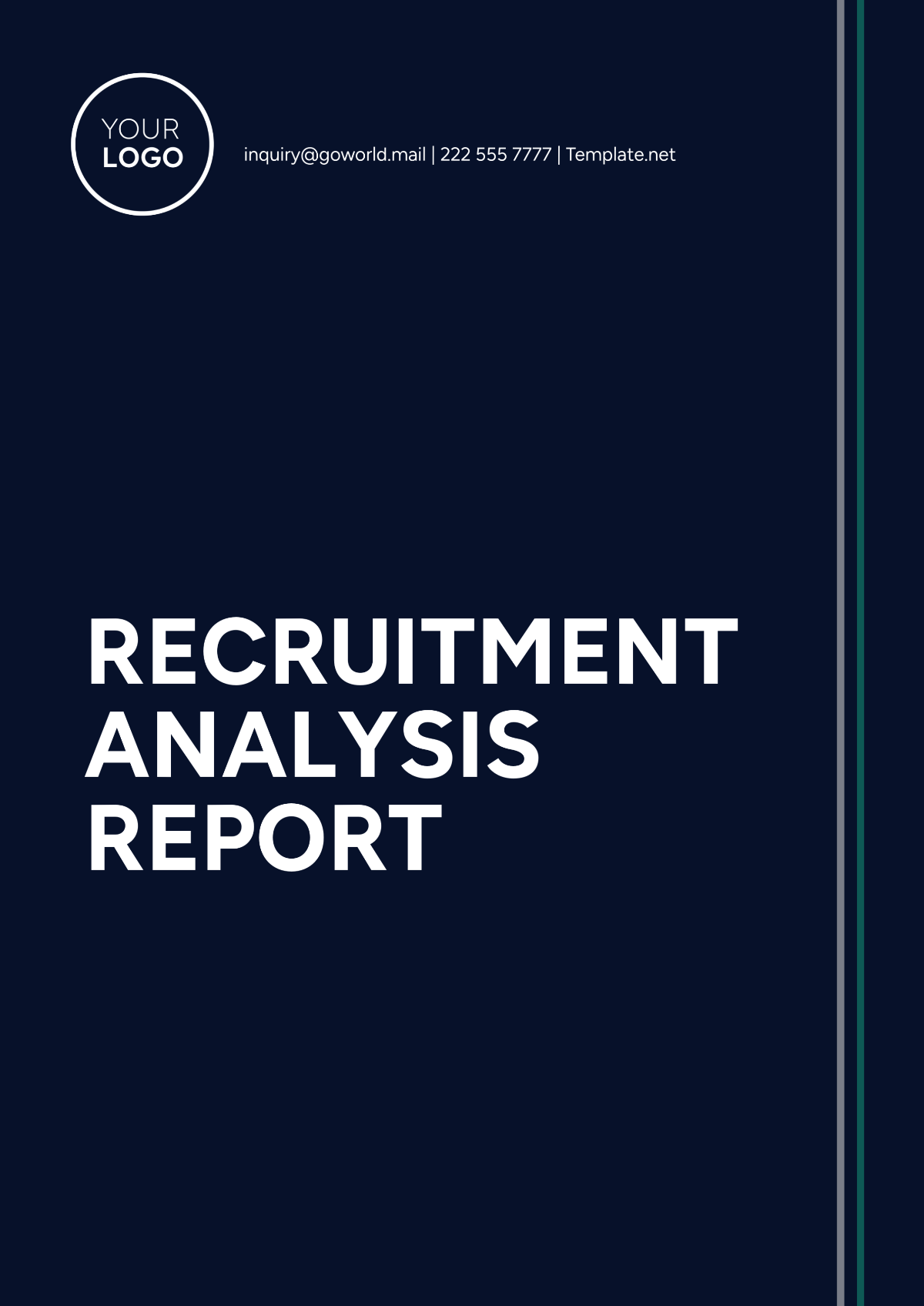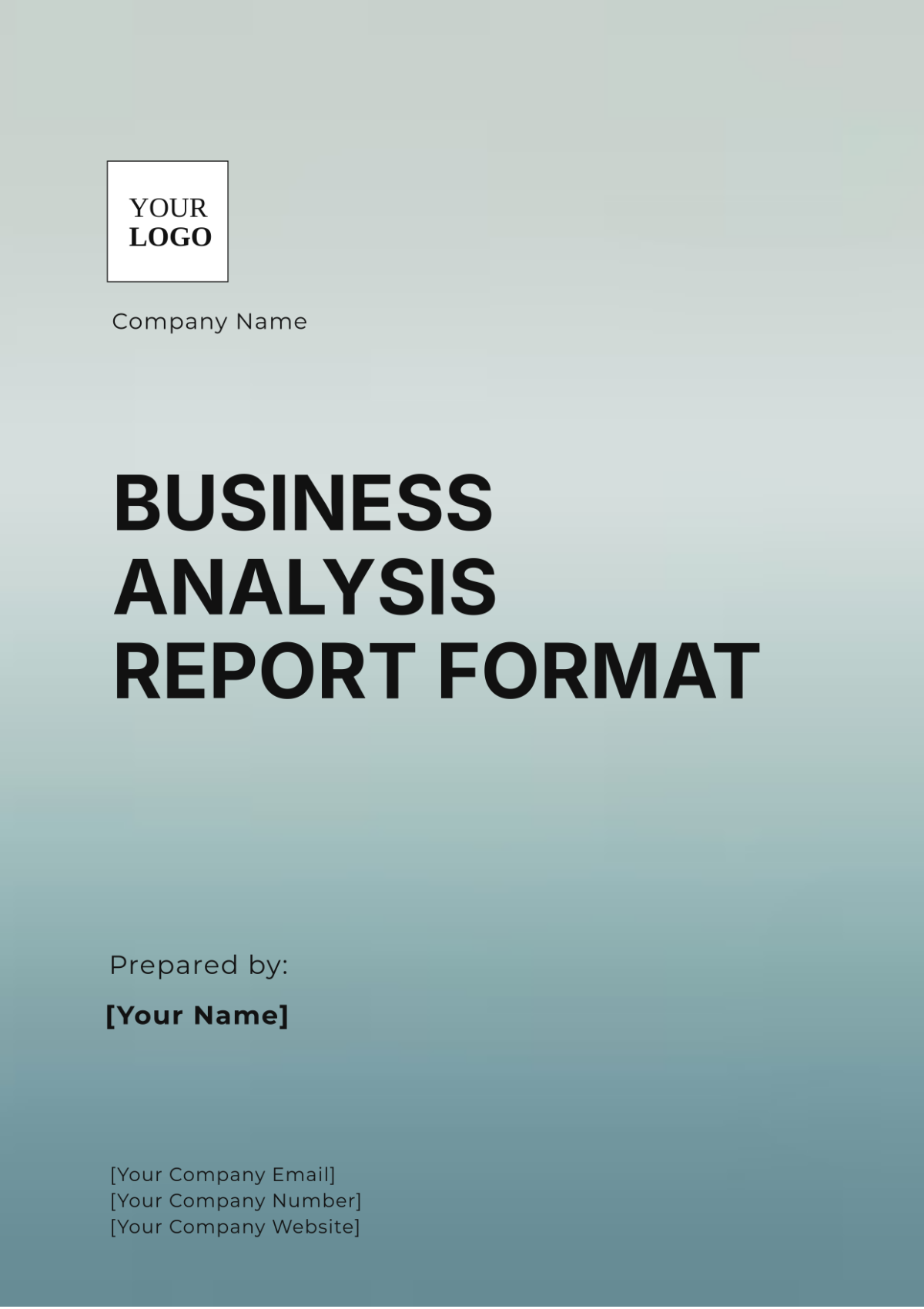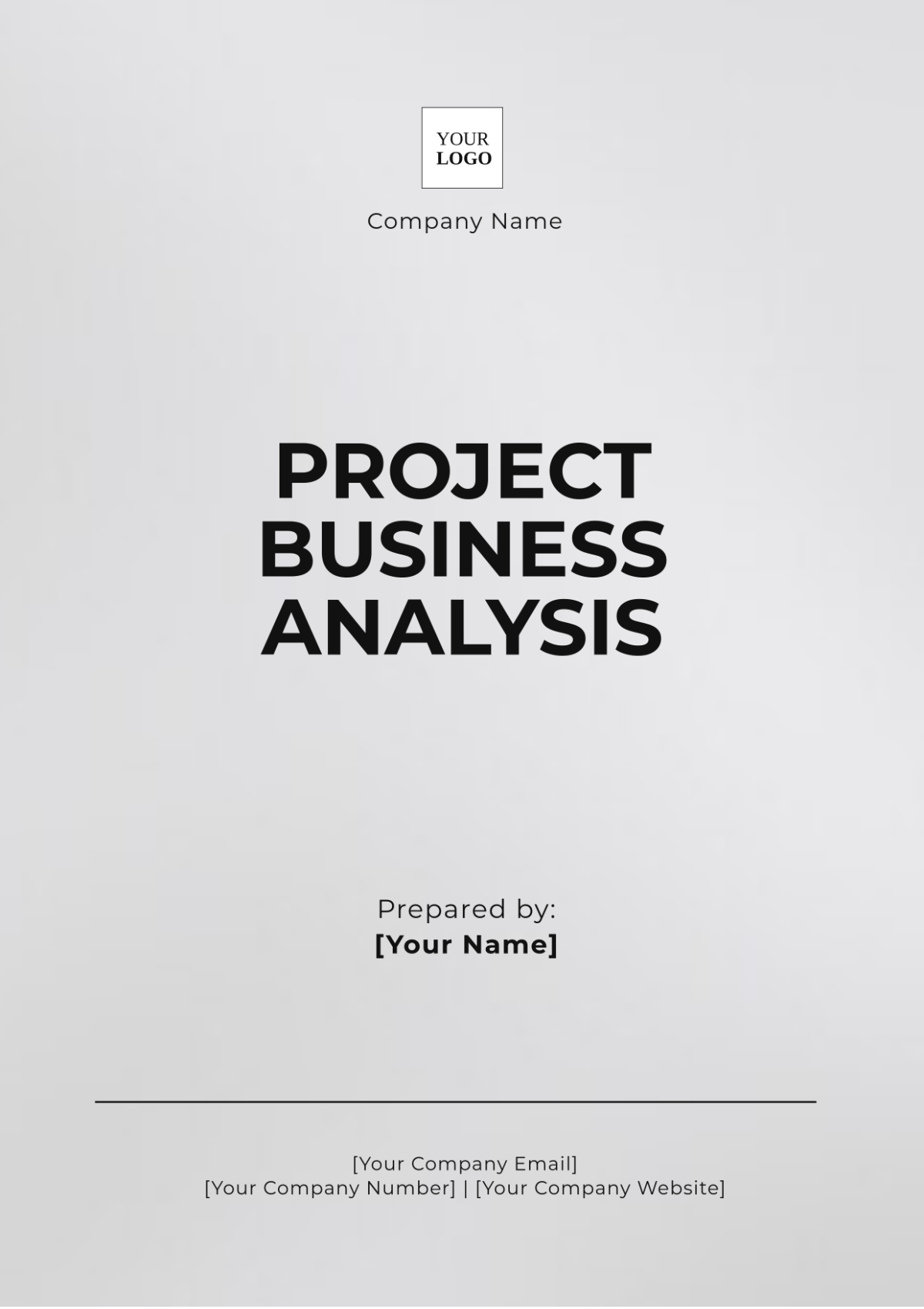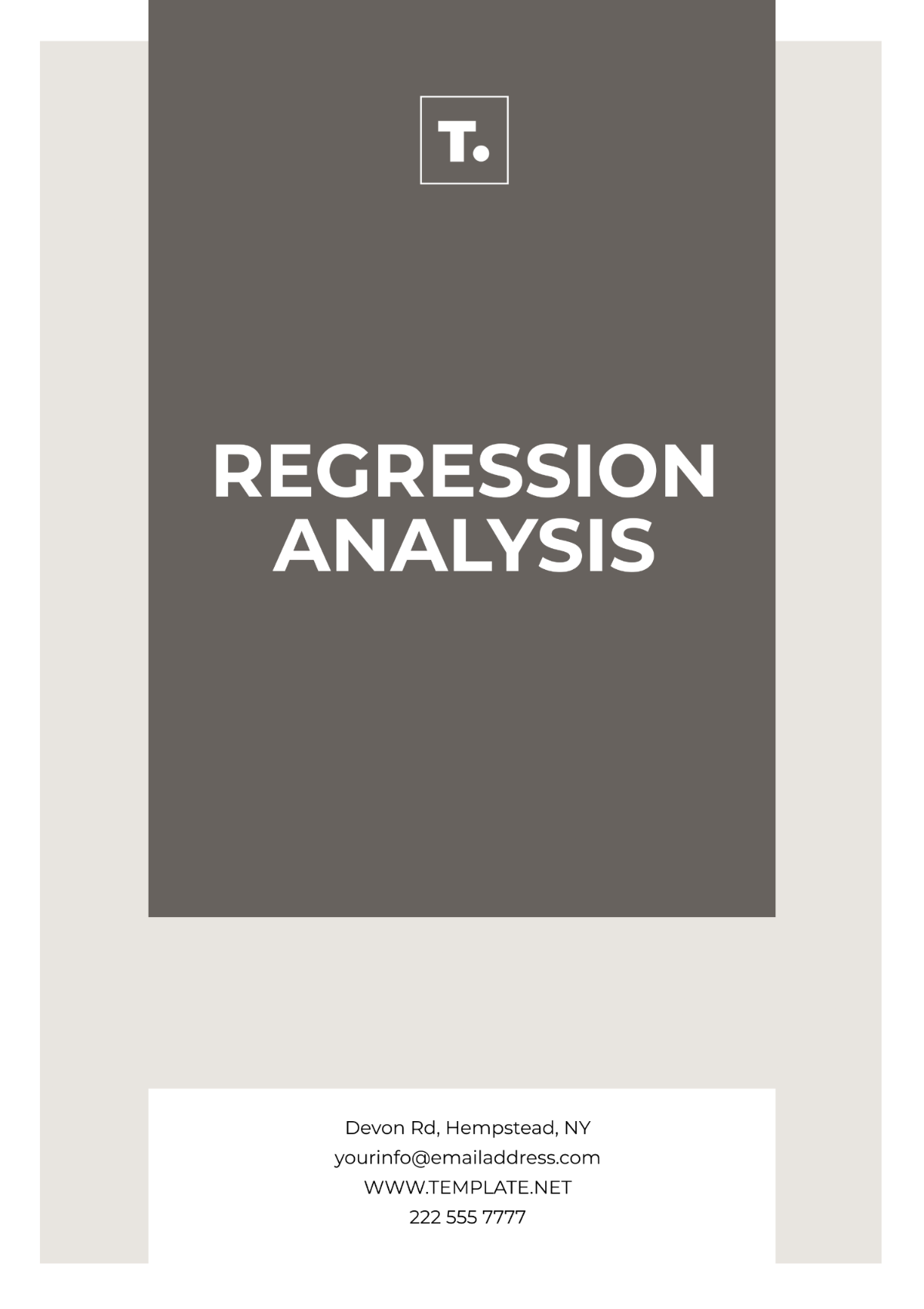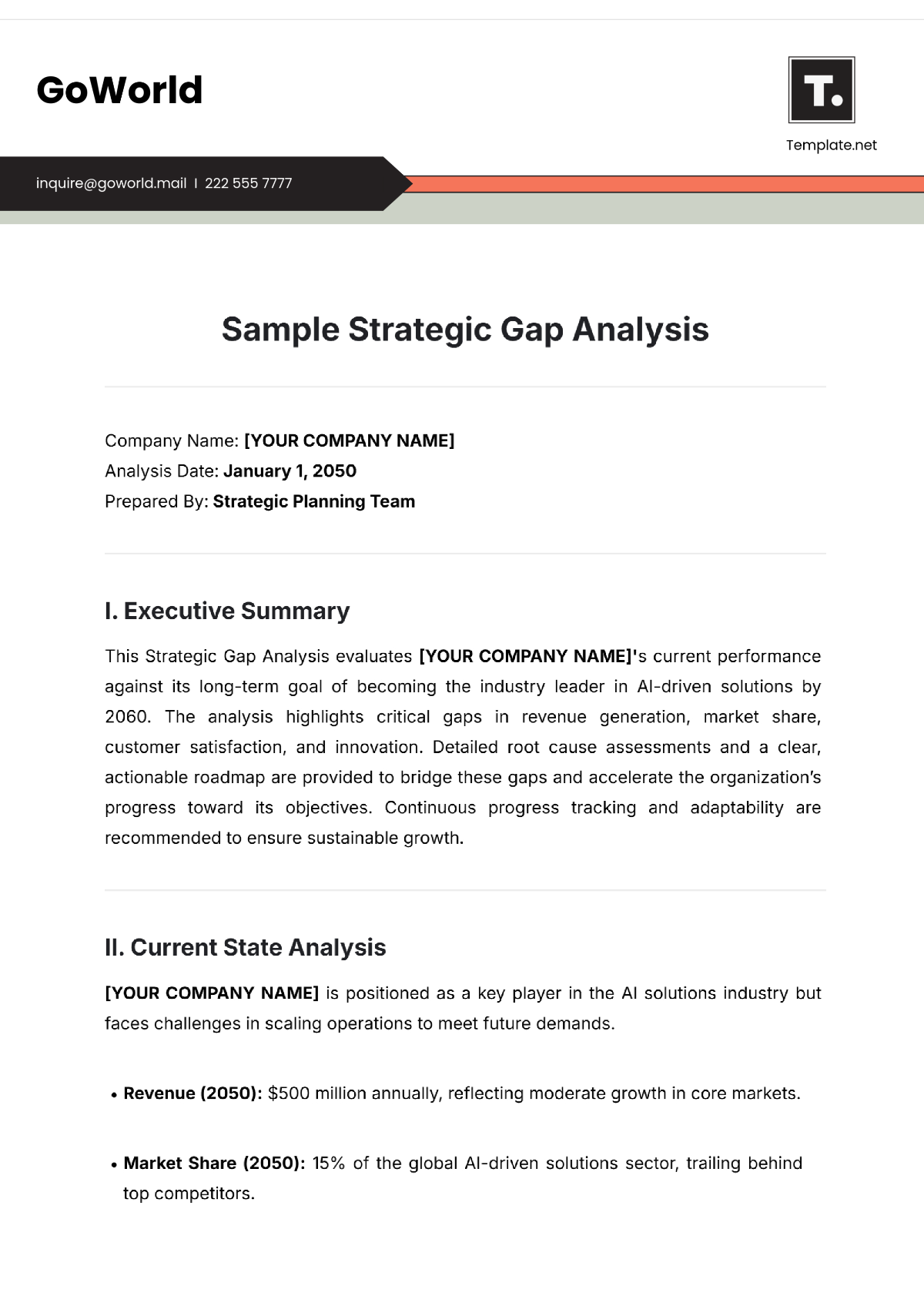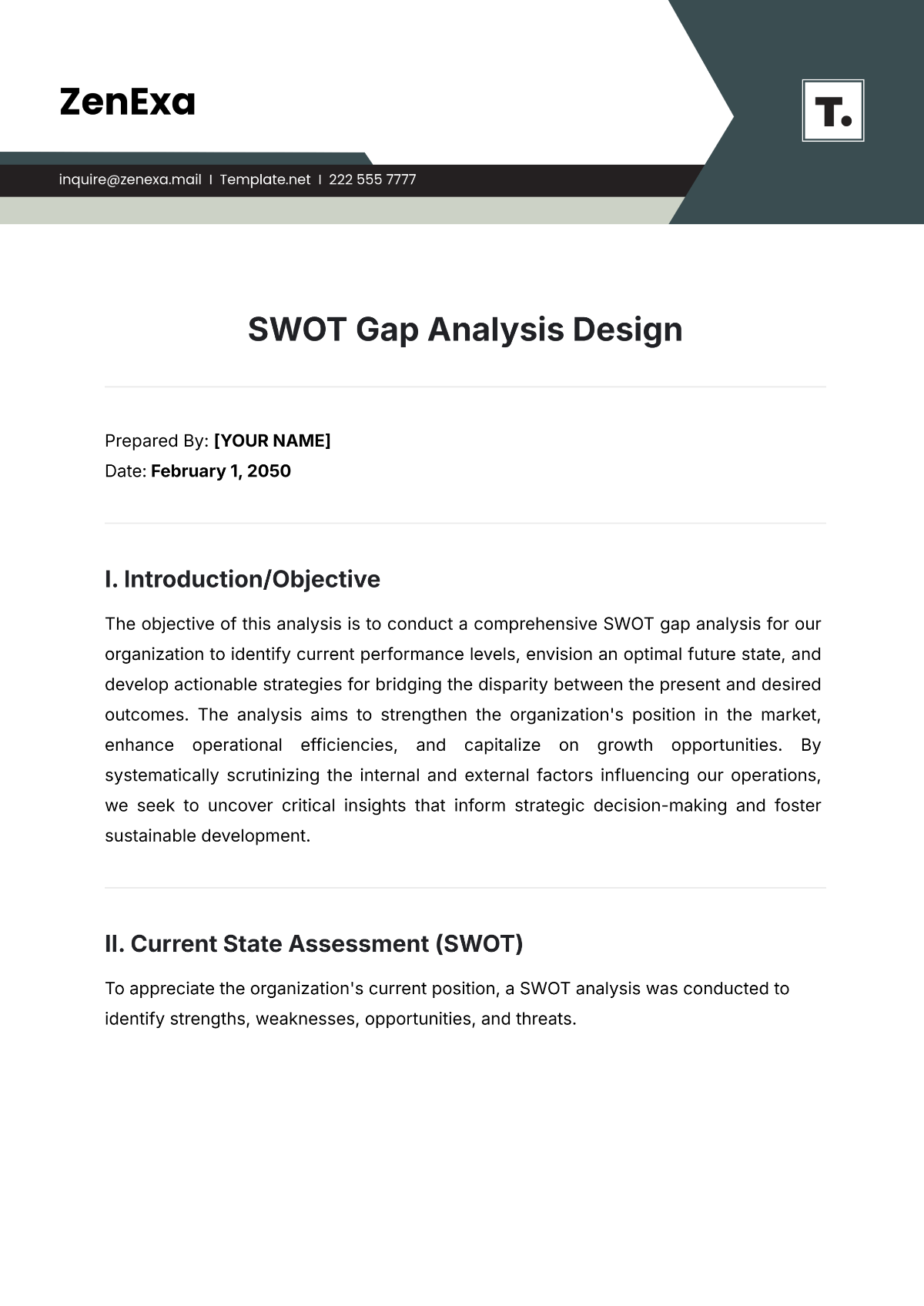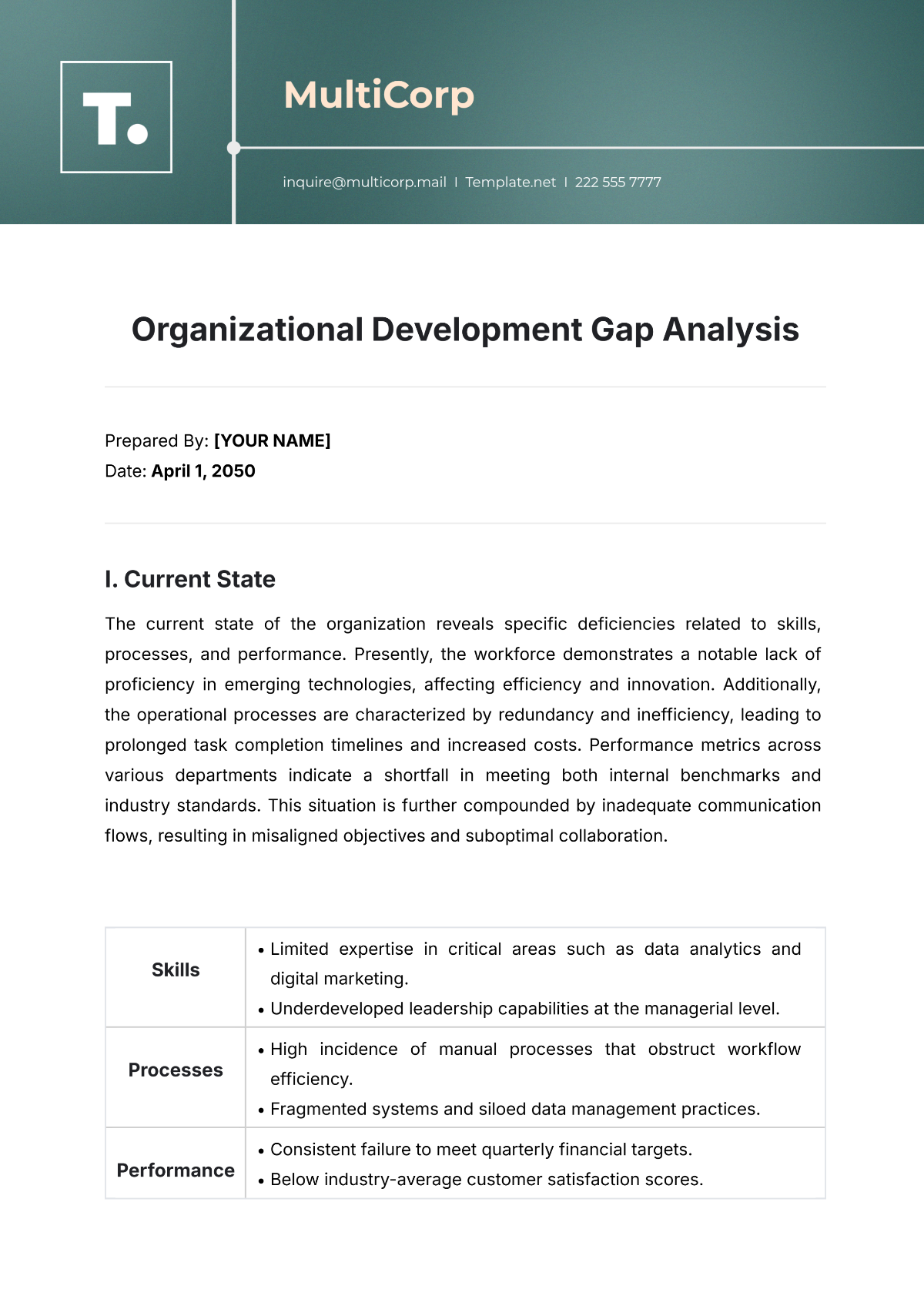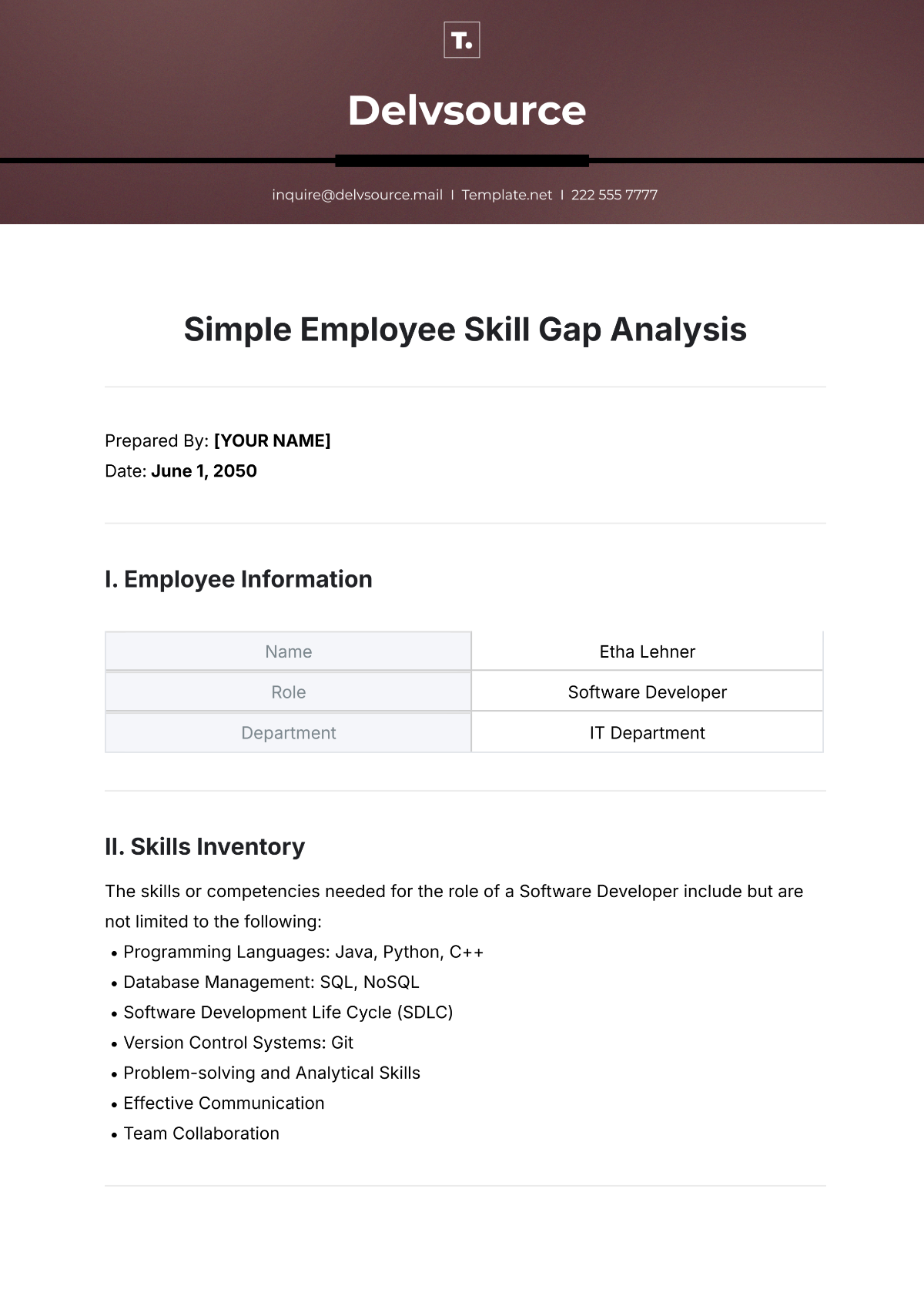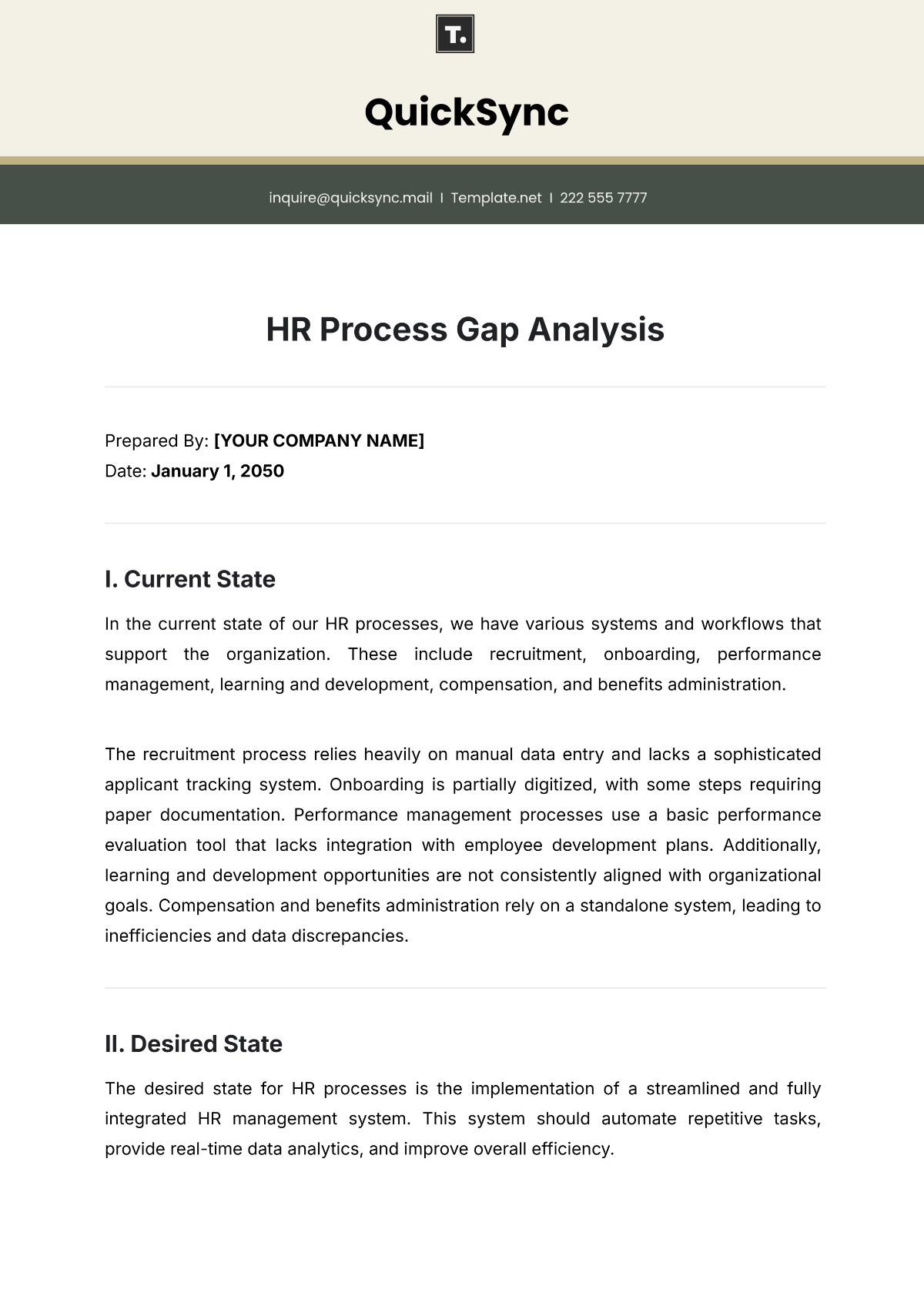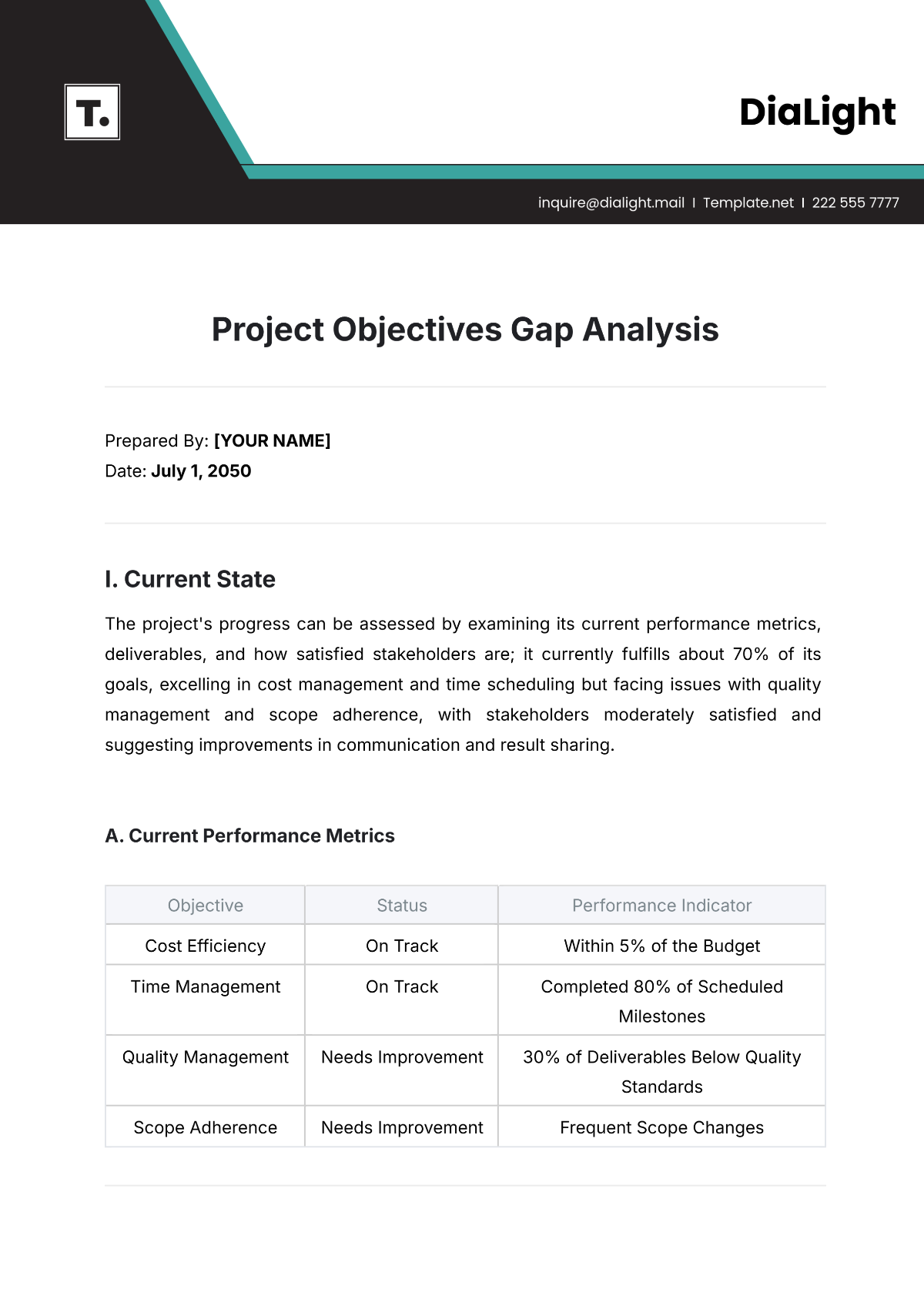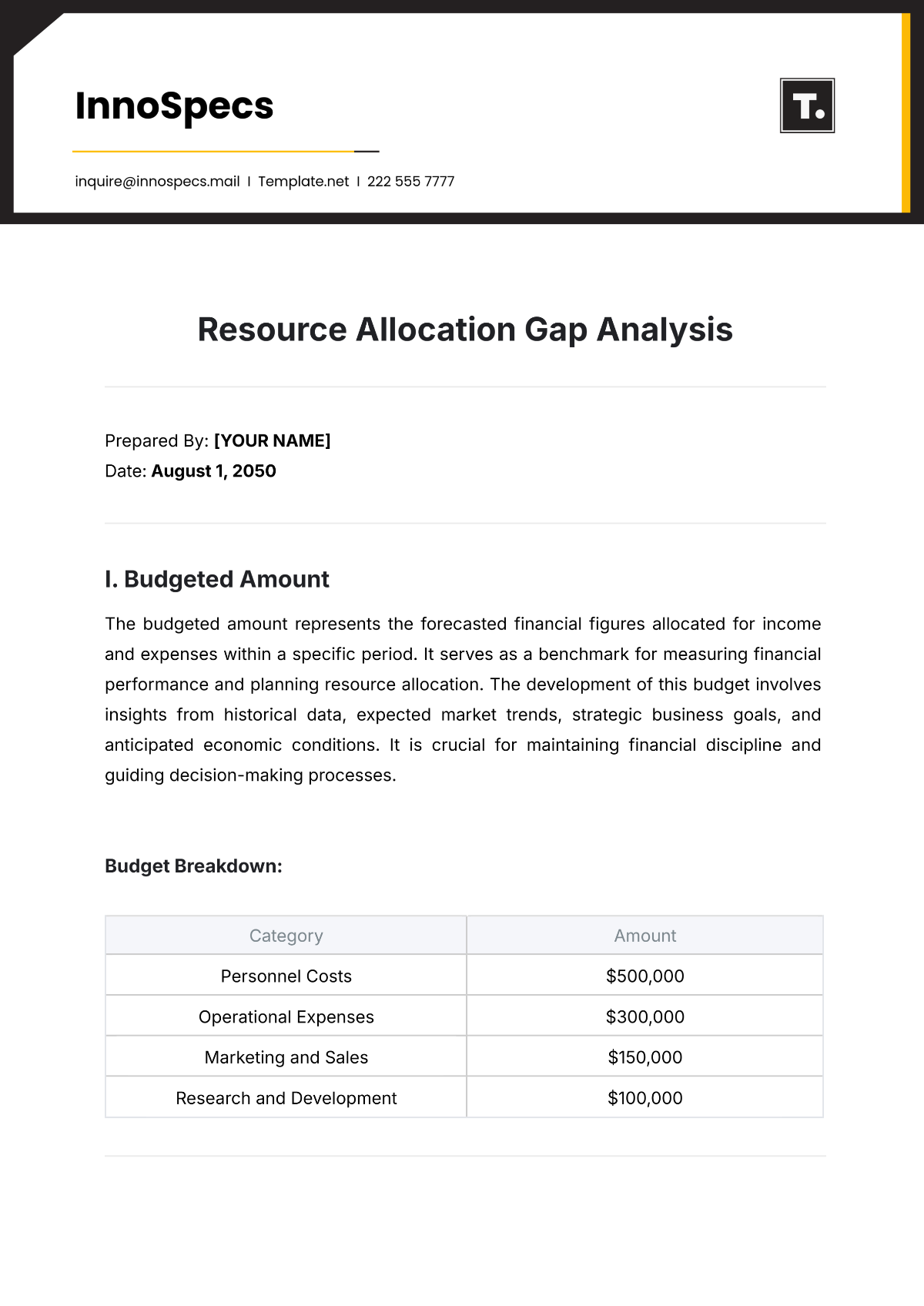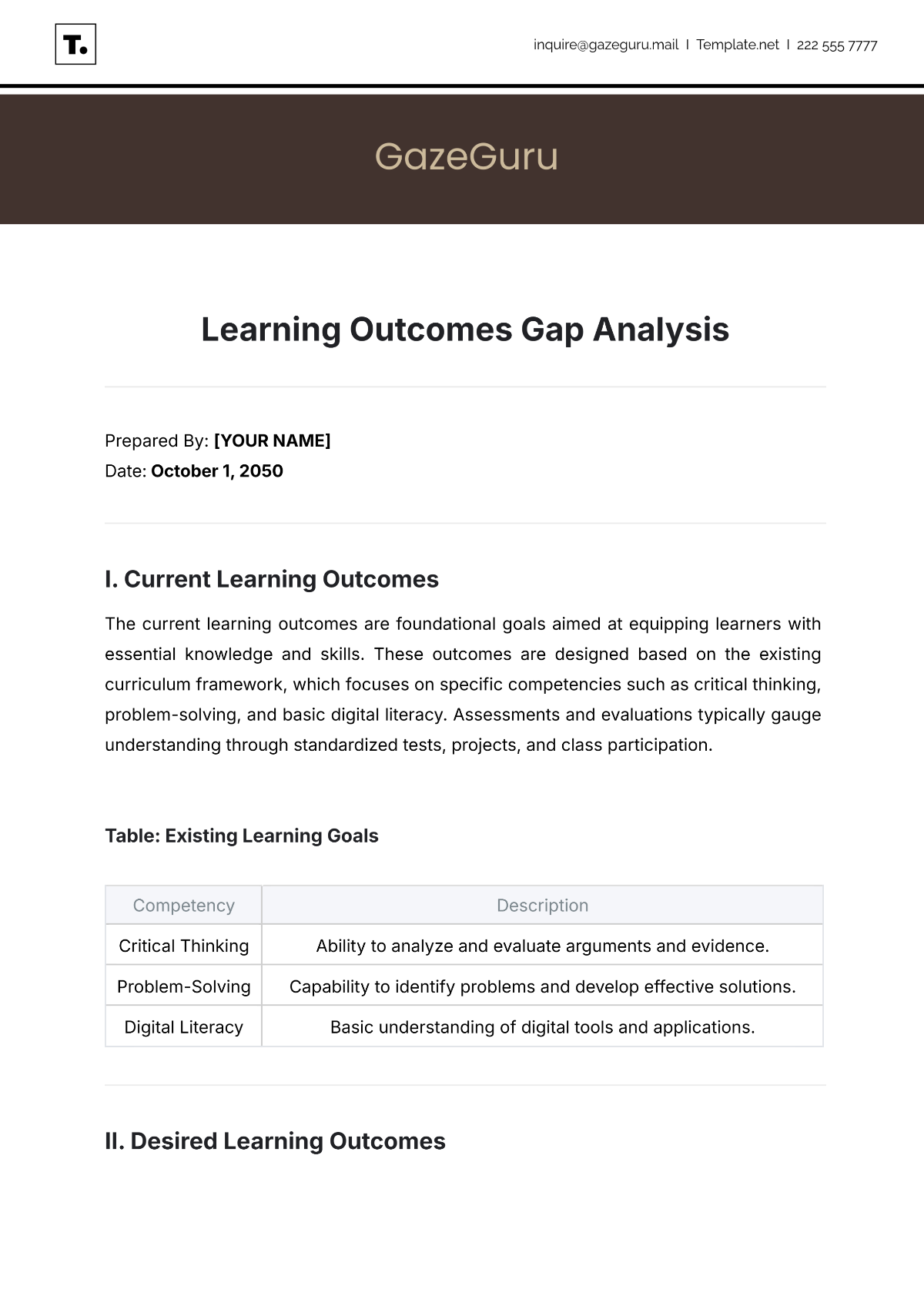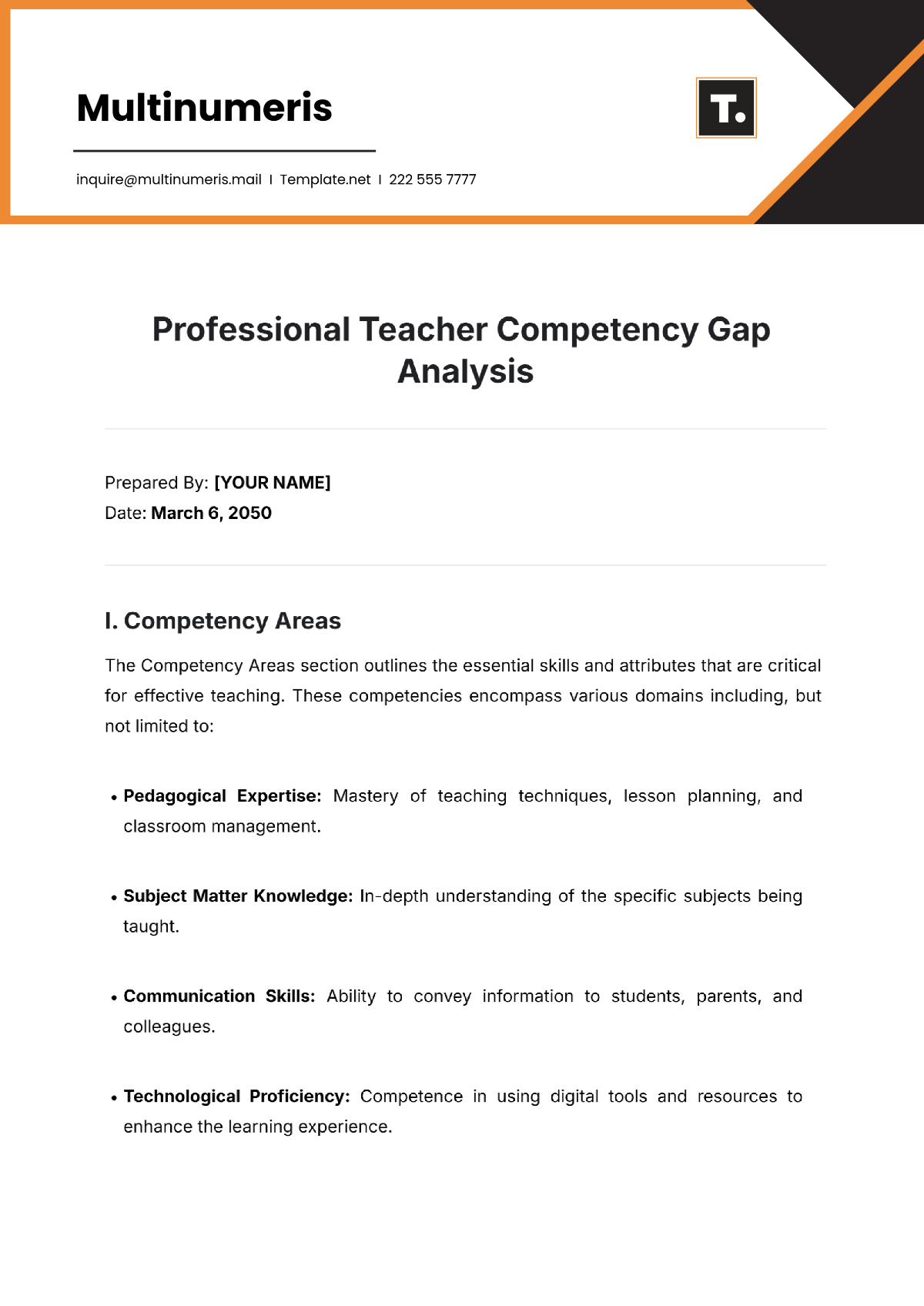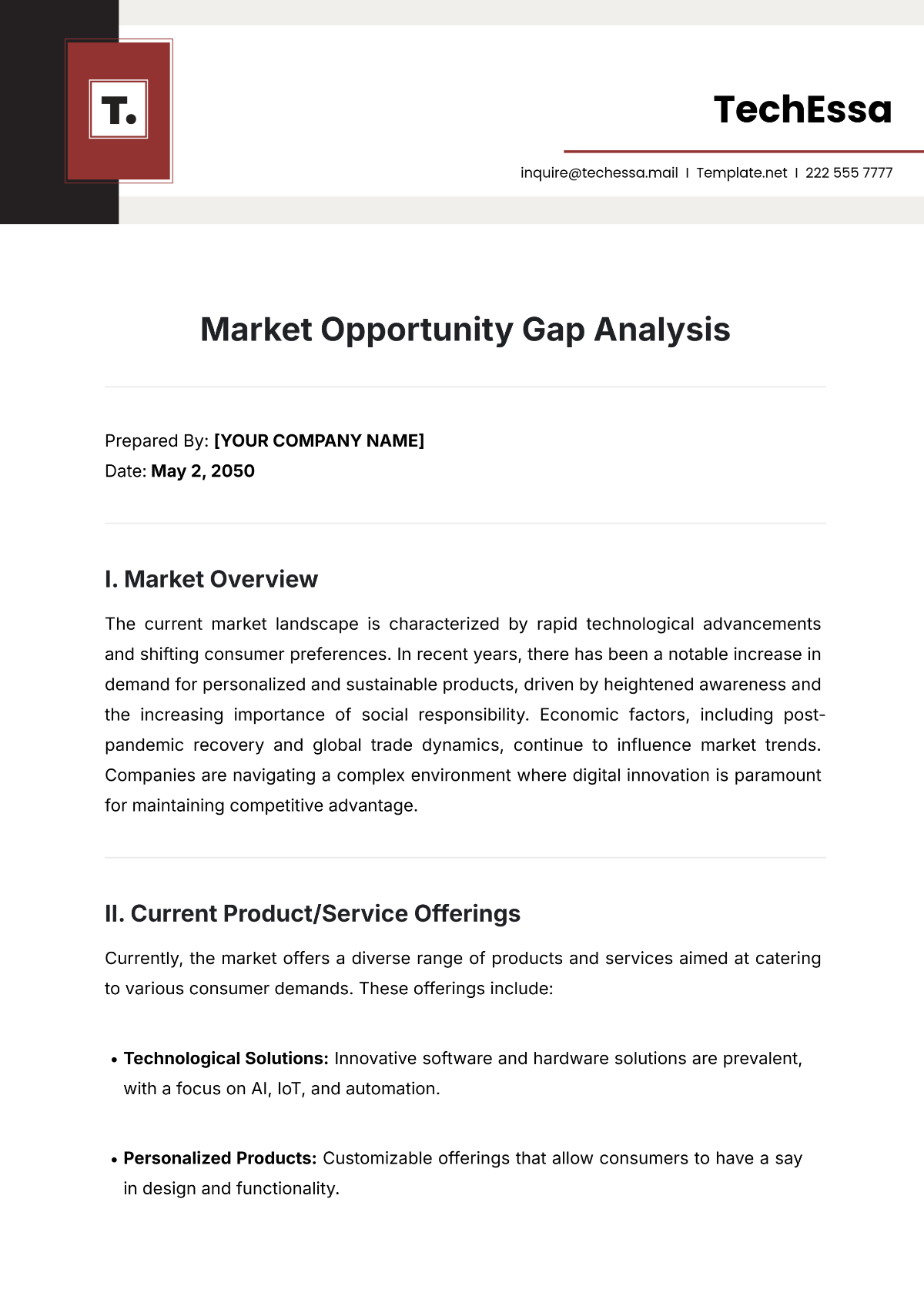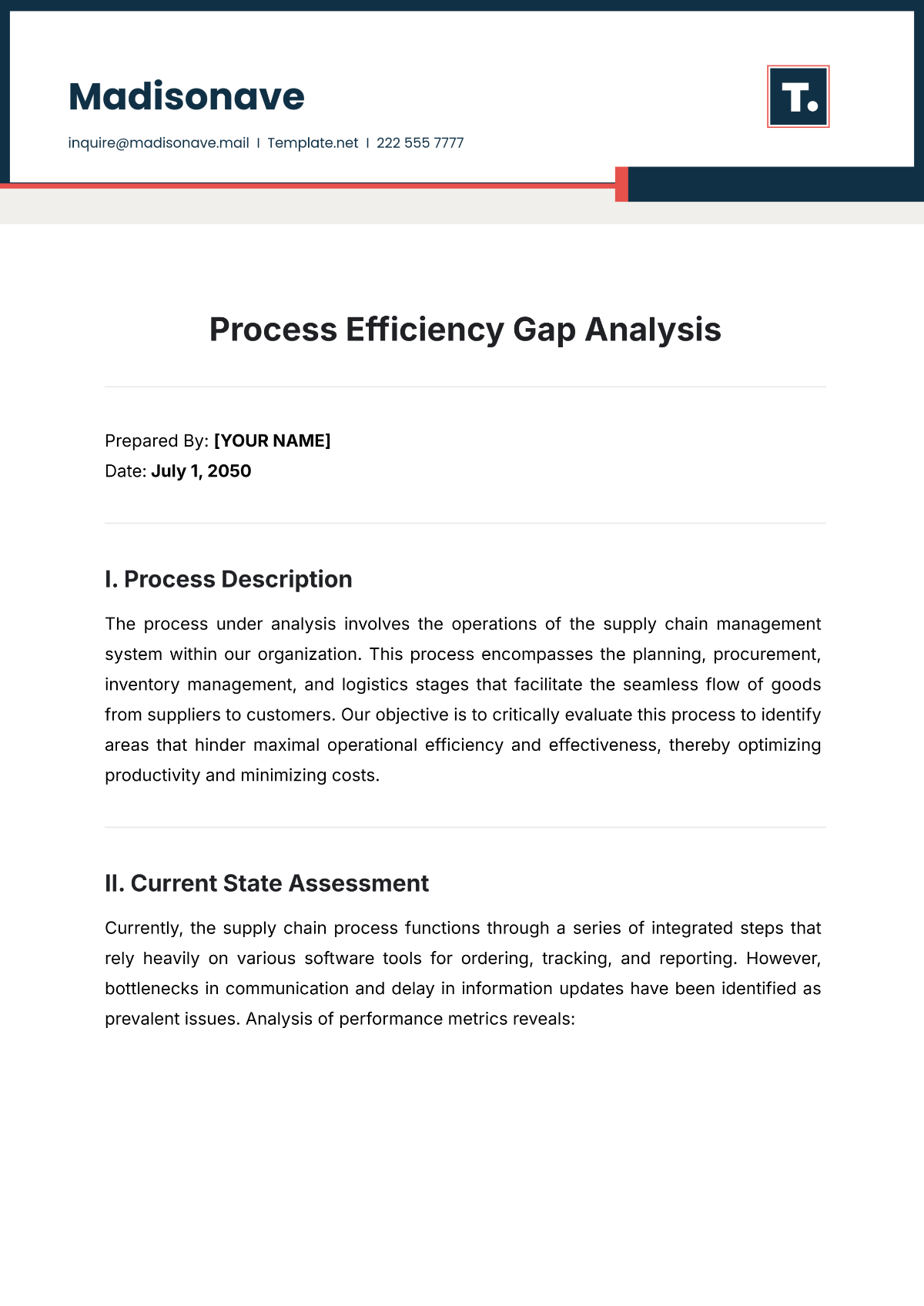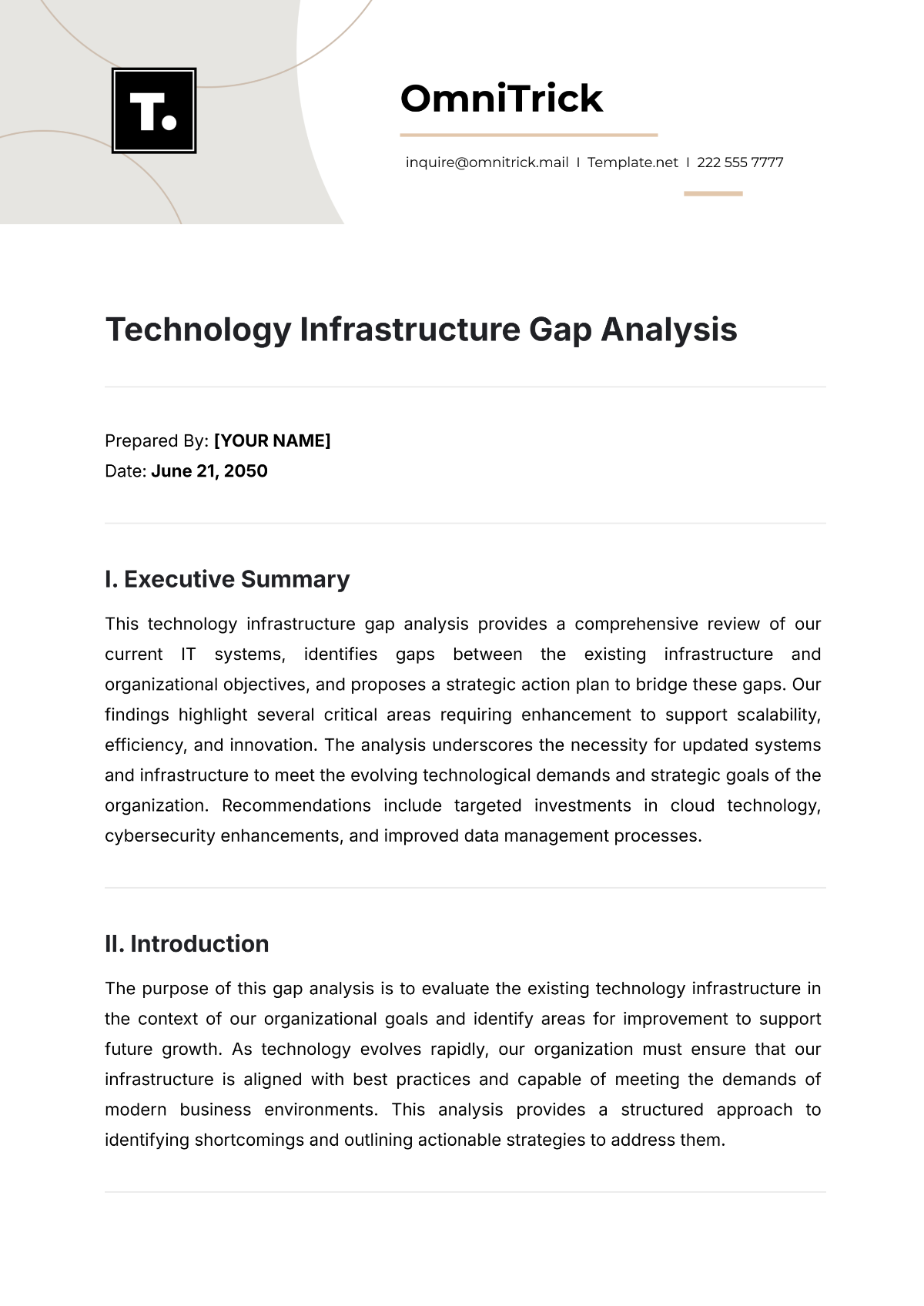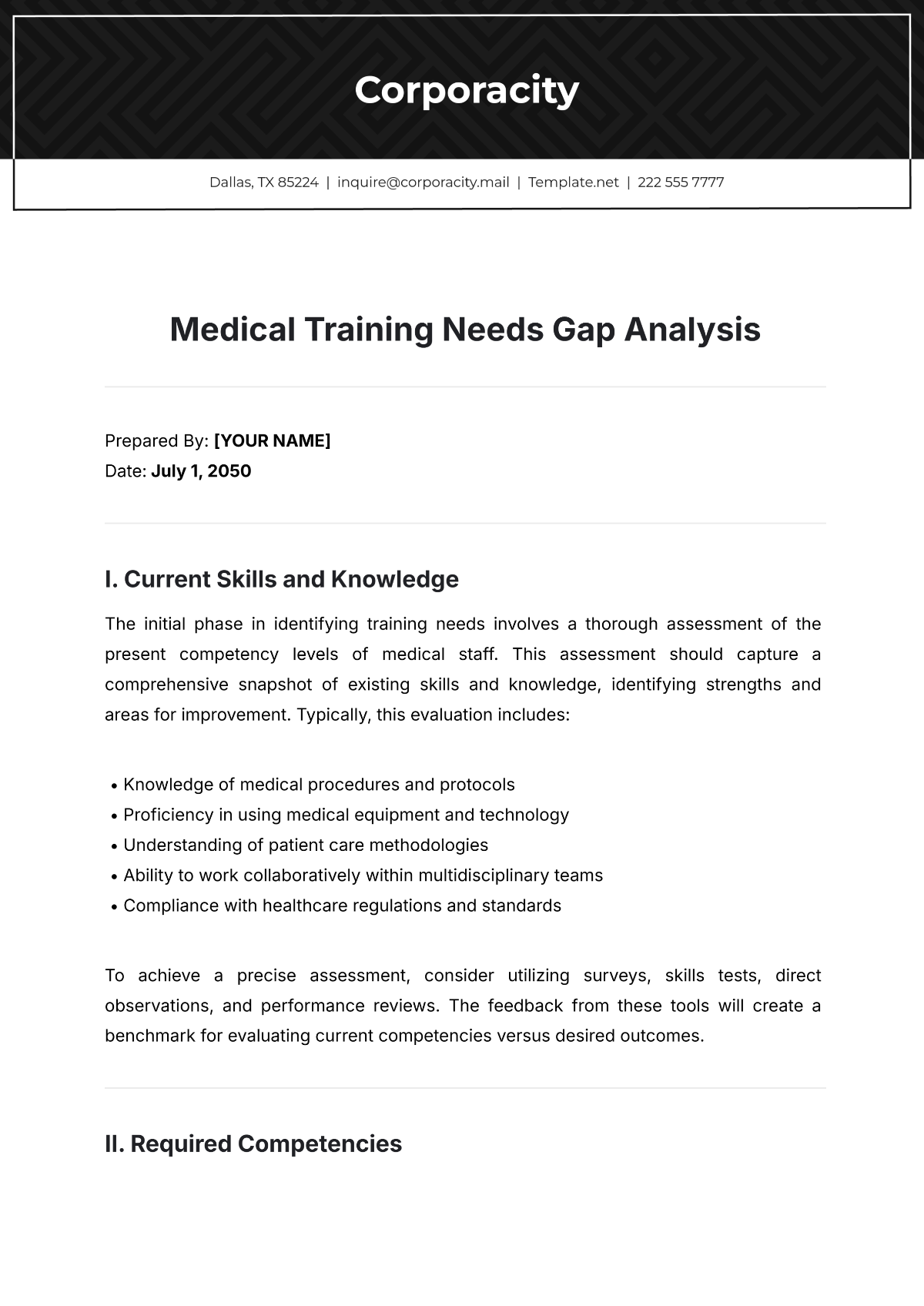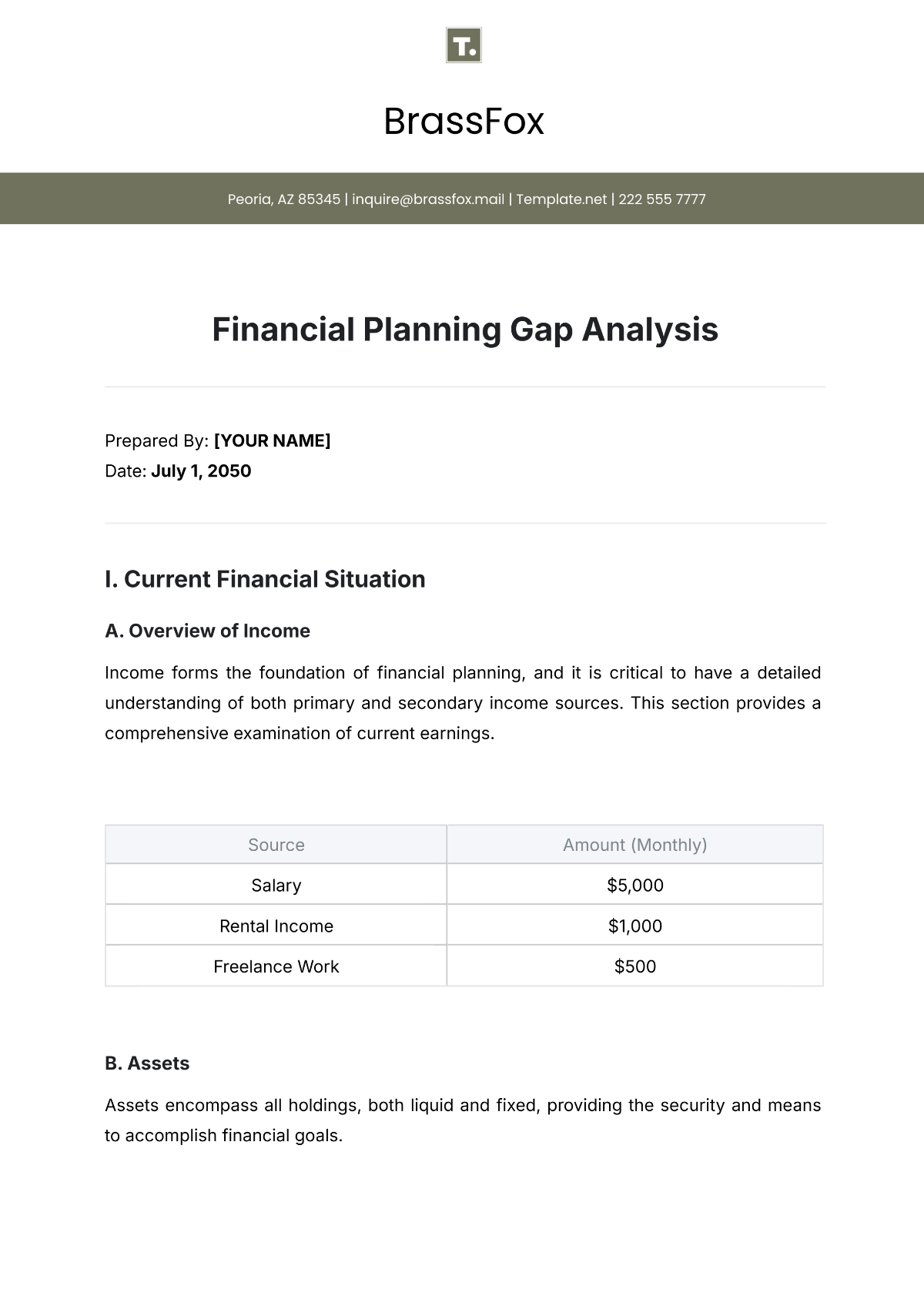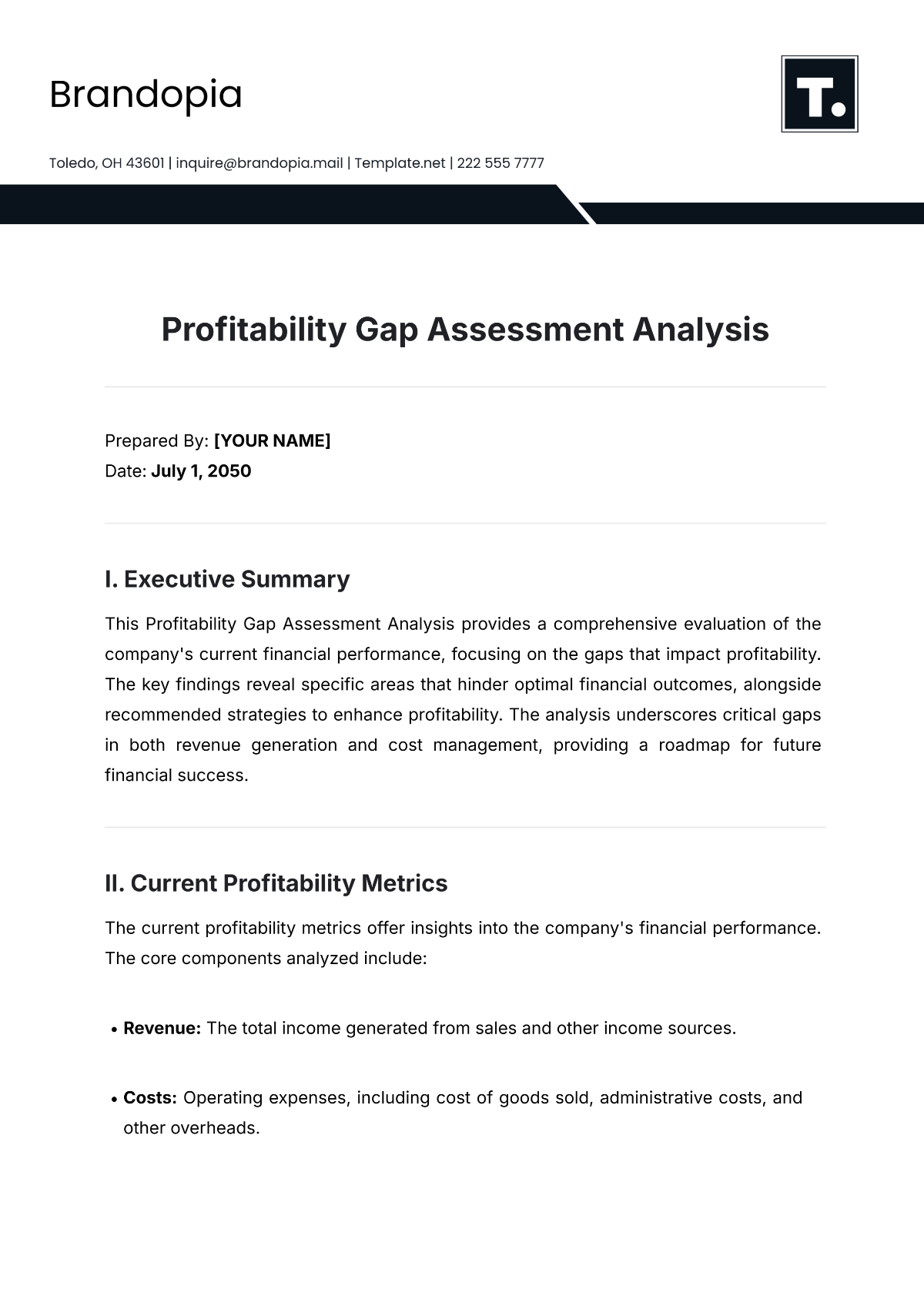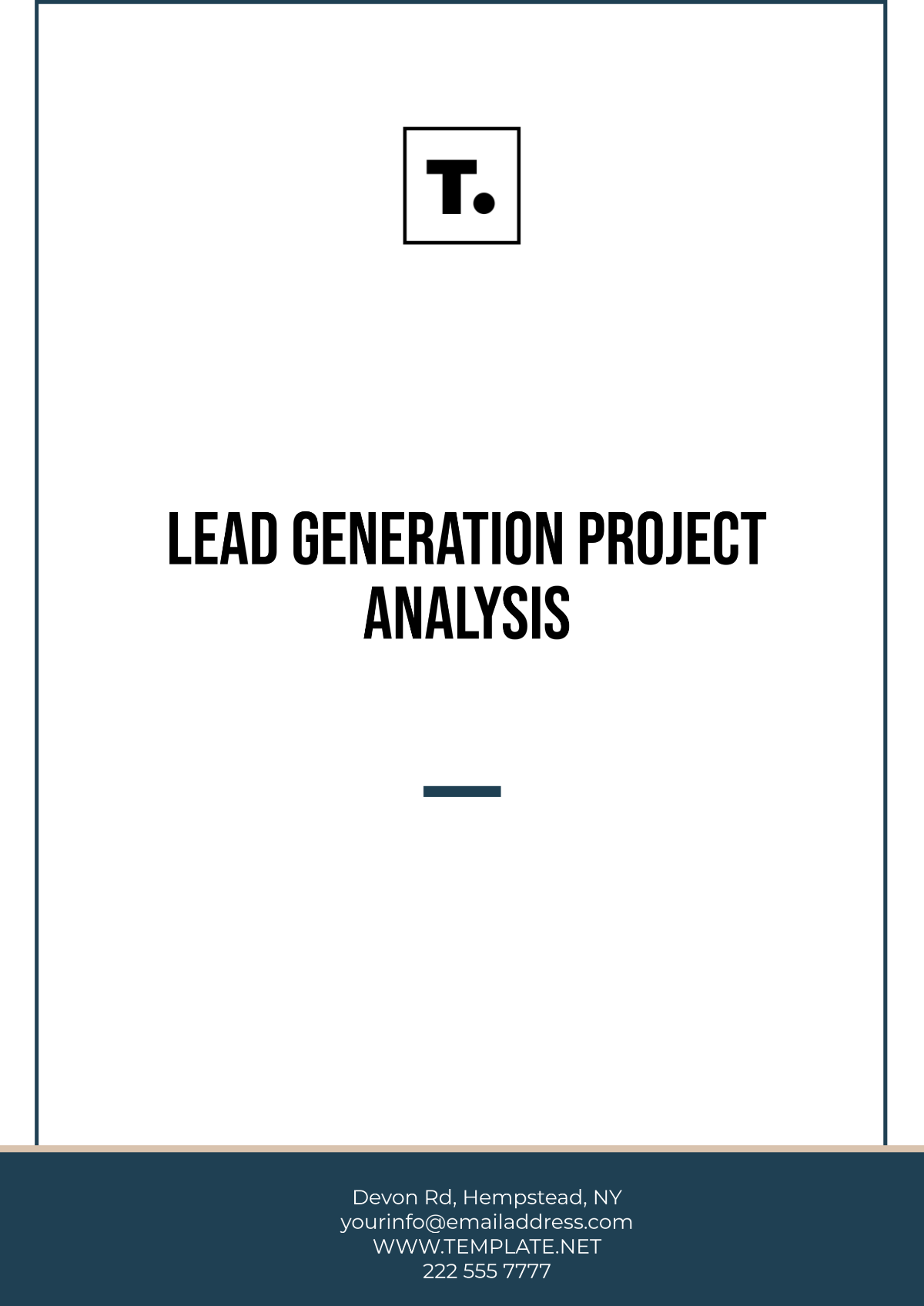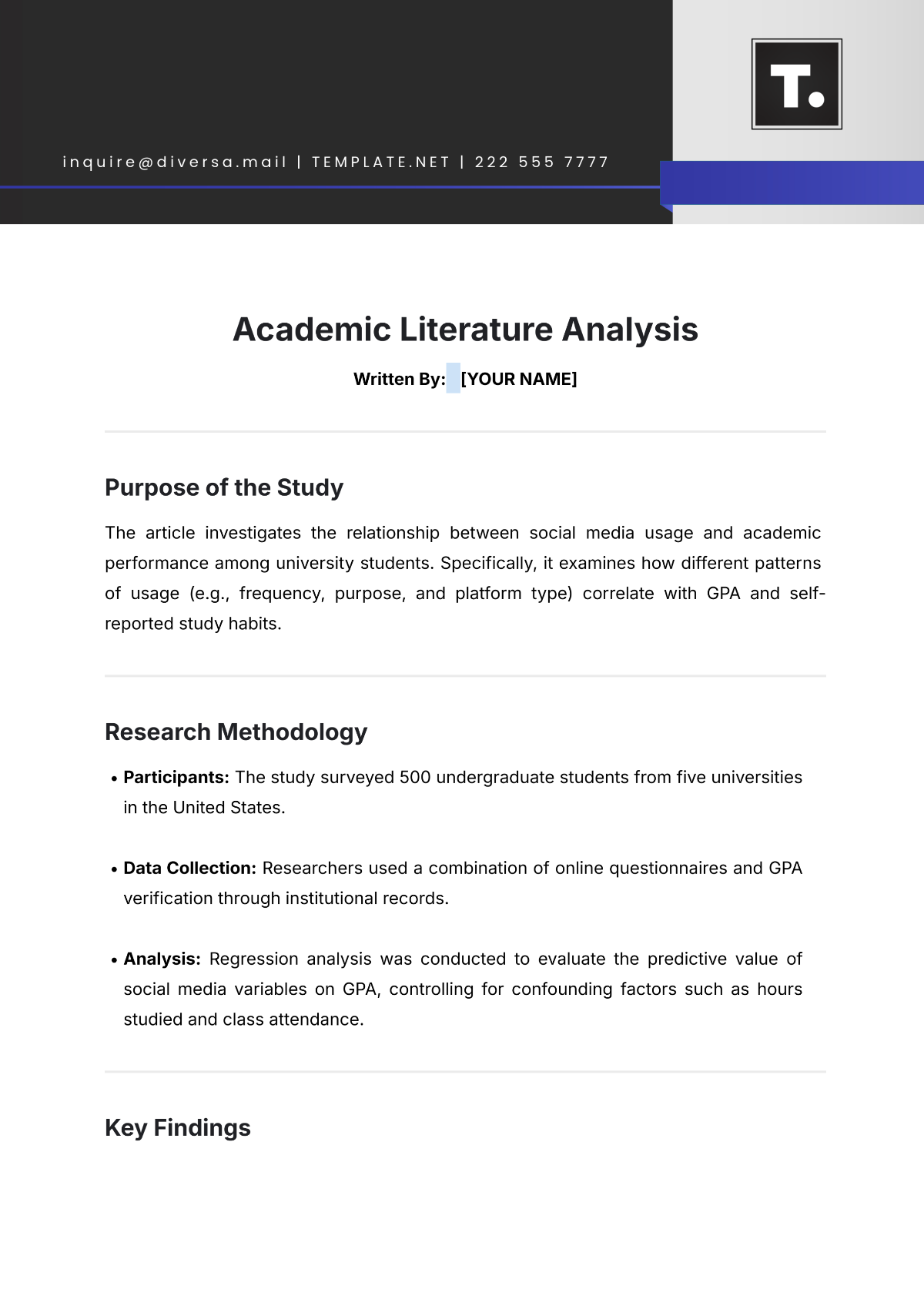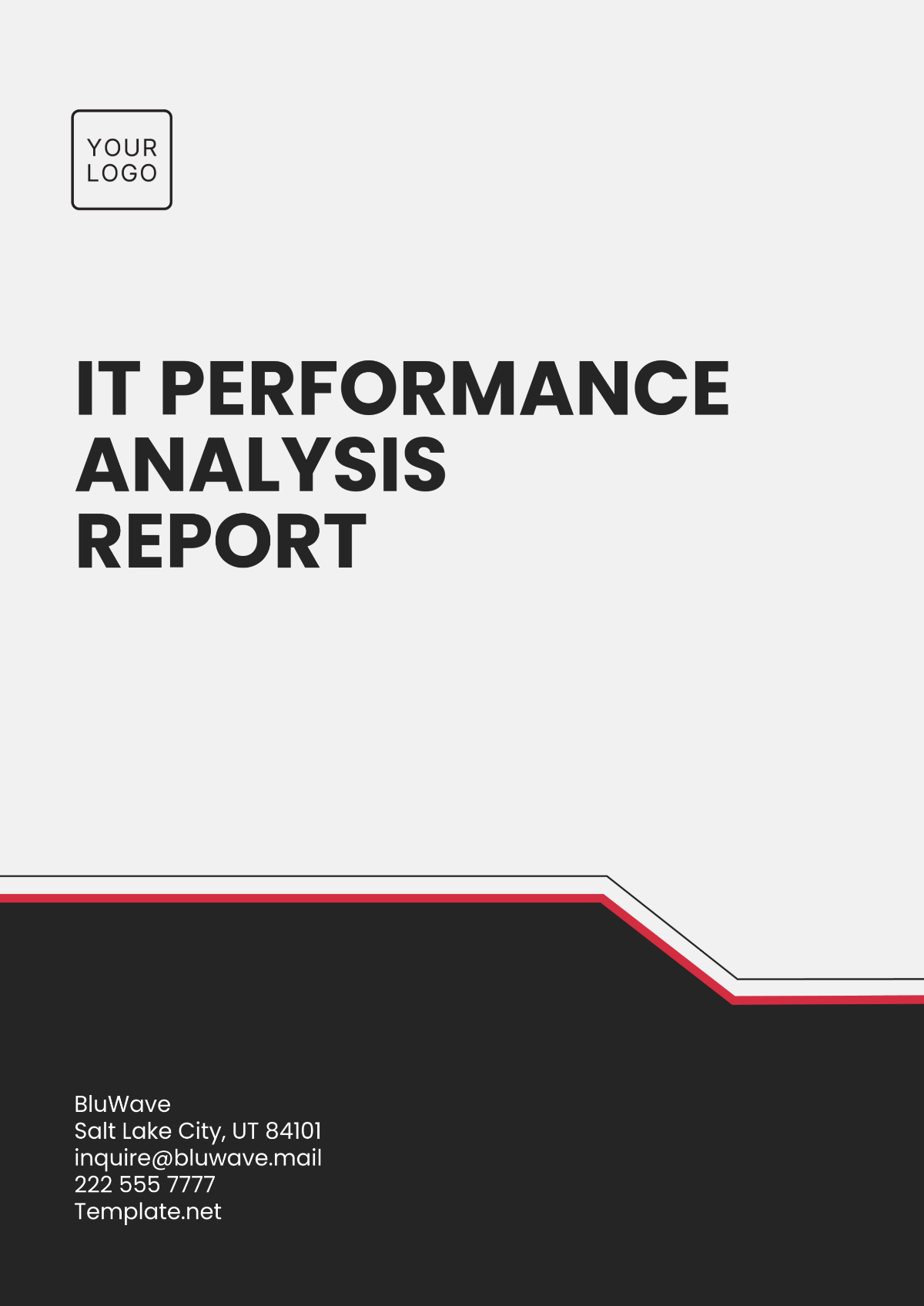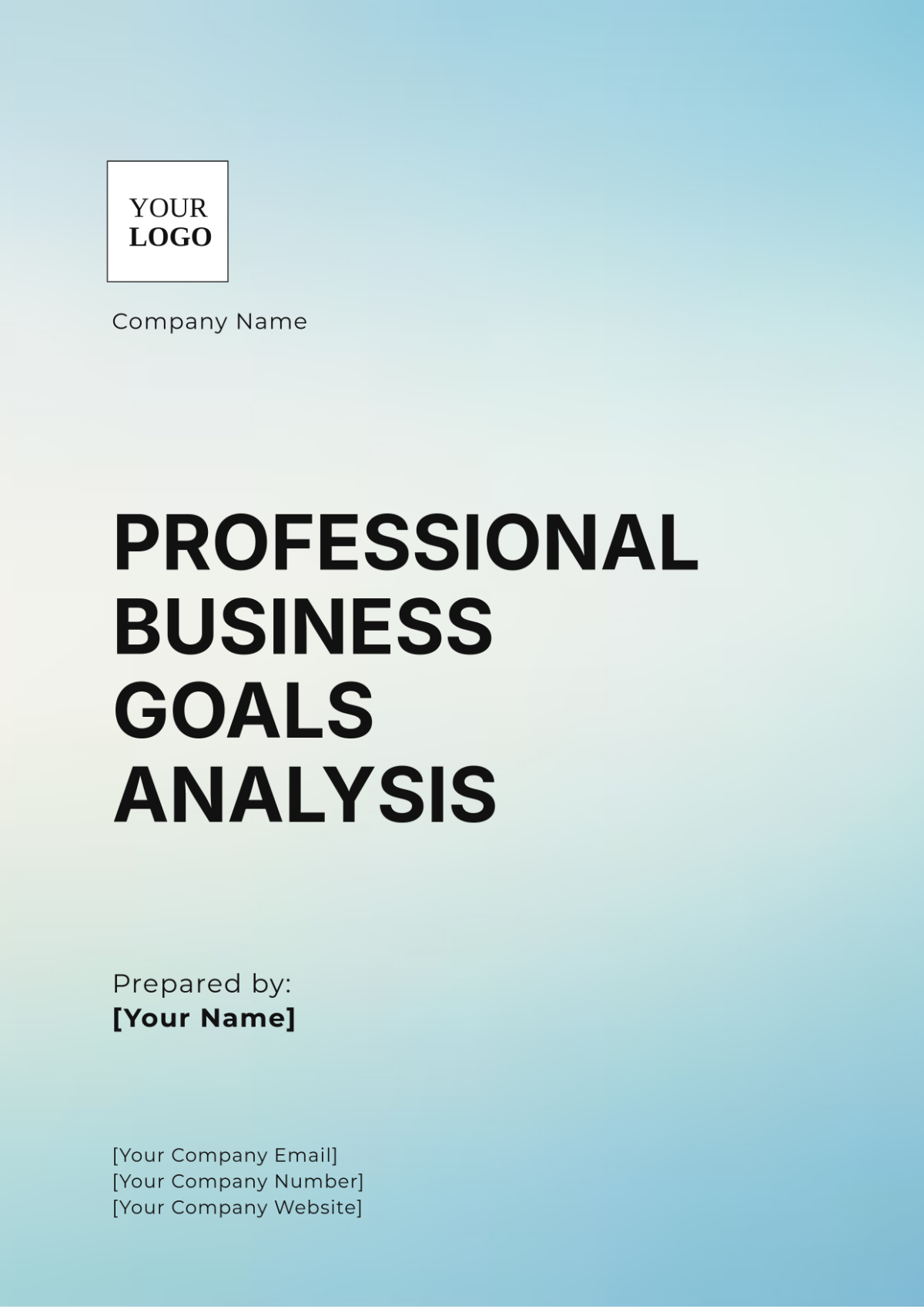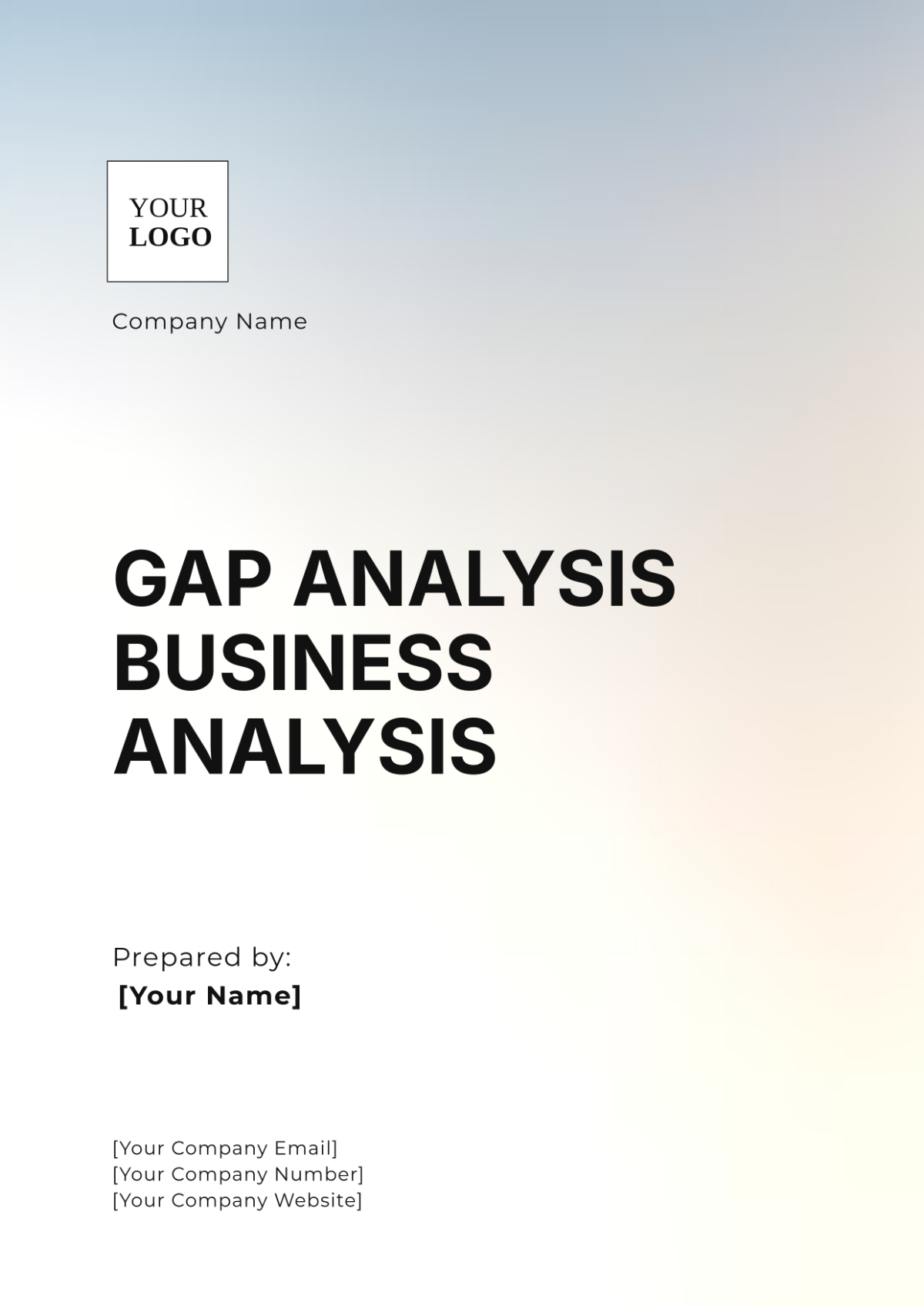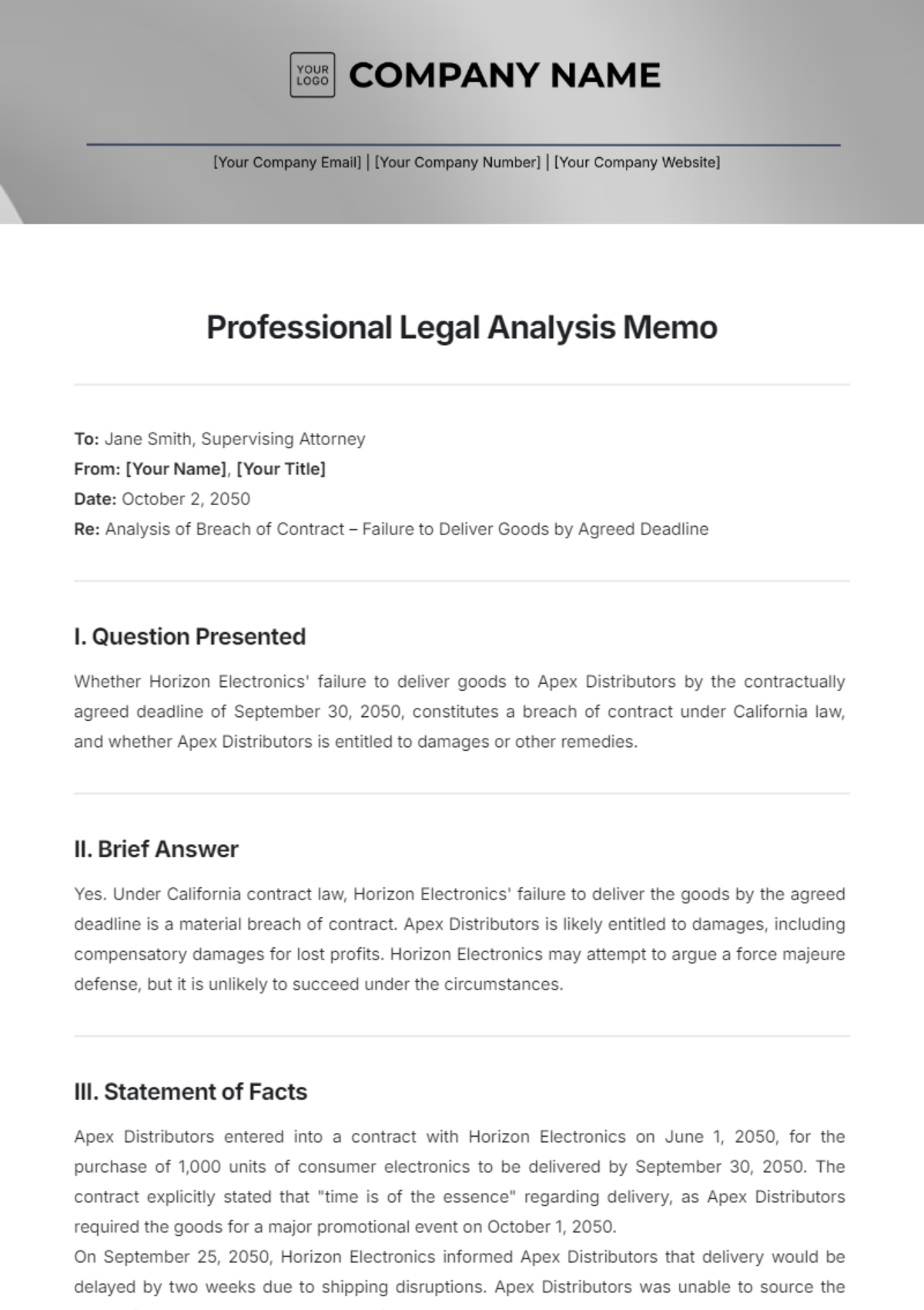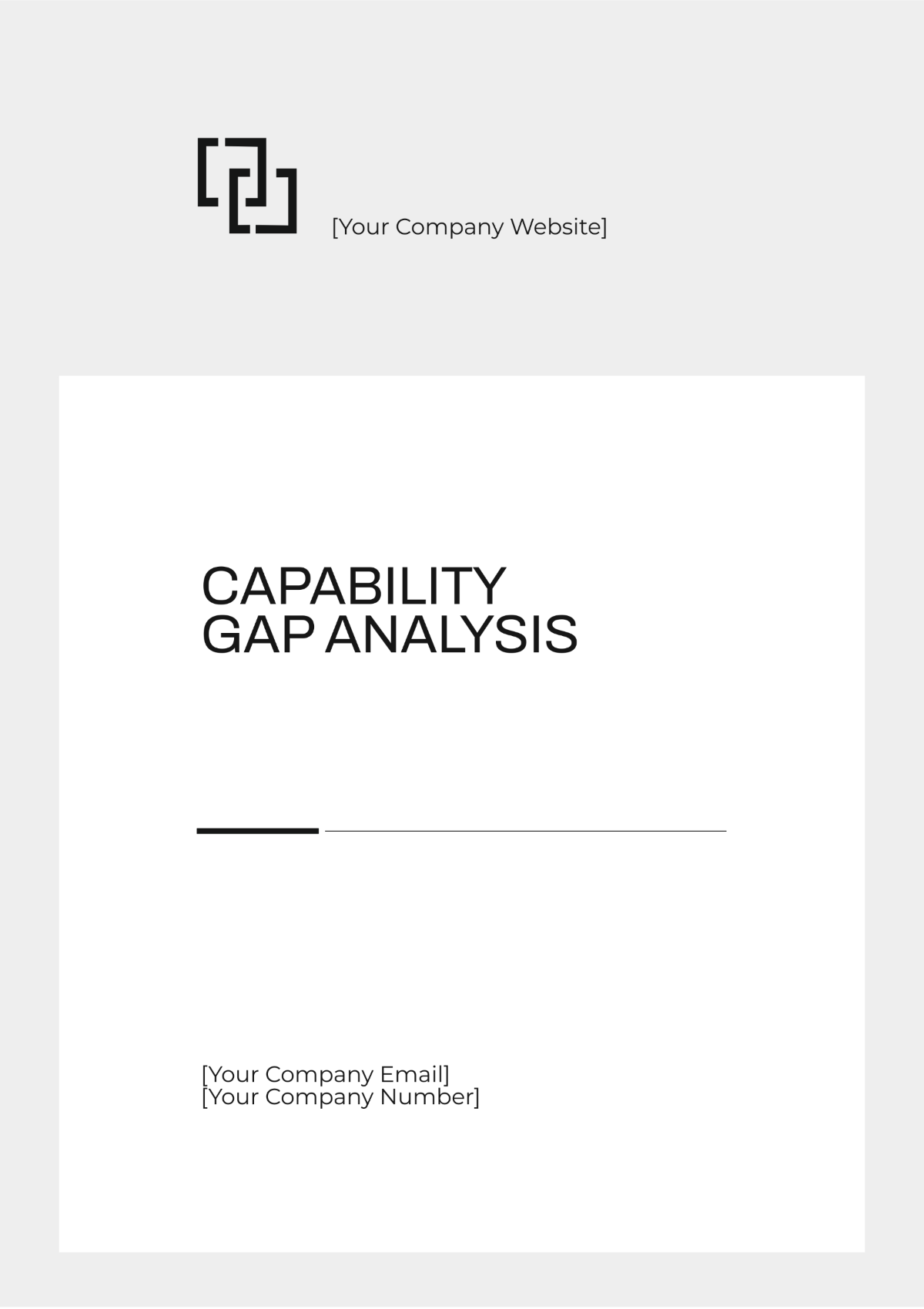Workforce Analysis
Prepared By : | [Your Name] |
Company : | [Your Company Name] |
Department : | [YOUR DEPARTMENT] |
Address: | [Your Company Address] |
Email: | [Your Company Email] |
I. Executive Summary
[Your Company Name] conducted a comprehensive workforce analysis to evaluate current employee skills against future needs in support of company expansion. Key findings indicate significant skill gaps that must be addressed to align with the company's growth objectives.
II. Introduction
The purpose of this workforce analysis is to assess the readiness of our workforce to meet the demands of our expanding operations and technological advancements in the year 2050 and beyond.
III. Current Workforce Profile
A. Demographic Analysis
Age distribution: The majority of employees are in the 25-40 age range, with a growing number of younger hires.
Gender diversity: 55% male, 45% female, with efforts underway to improve gender balance.
Ethnicity breakdown: Diverse workforce with representation from various ethnic backgrounds.
B. Skills Inventory
Current skills: Strong in technical areas such as software development and engineering.
Skill gaps: Limited expertise in emerging technologies such as AI and blockchain.
Skills Inventory
Skill | Number of Employees | Skill Level (1-5) |
|---|---|---|
Software Development | 120 | 4 |
Engineering | 90 | 4 |
Artificial Intelligence | 30 | 2 |
Blockchain | 20 | 1 |
C. Performance Review
Employee performance: Generally satisfactory, with a few standout performers identified.
Areas needing improvement: Communication skills and adaptability to new technologies.
IV. Future Workforce Needs
A. Company Expansion Plan
[Your Company Name] plans to expand its market presence globally by 2055, necessitating a skilled workforce to support growth initiatives.
B. Skill Requirements
Skills needed: Proficiency in AI, blockchain, cybersecurity, and data analytics to drive innovation.
Changes in job roles: Increased focus on research and development, data science, and cybersecurity.
C. Technology and Industry Trends
Technological advancements: Rapid advancements in AI and automation are reshaping industry landscapes.
Skills required: Demand for expertise in quantum computing, bioinformatics, and sustainable energy technologies.
V. Gap Analysis
A. Current vs. Future Skills
Identified gaps: Lack of expertise in emerging technologies poses a significant challenge.
Priority skills: Investment needed in training programs for AI, blockchain, and cybersecurity.
Priority Skills Gap Analysis
Skill | Current Skill Level (1-5) | Future Skill Requirement (1-5) | Gap |
|---|---|---|---|
Artificial Intelligence | 2 | 4 | 2 |
Blockchain | 1 | 3 | 2 |
Cybersecurity | 3 | 4 | 1 |
B. Succession Planning
Succession readiness: Limited pipeline for key leadership positions, requiring proactive talent development strategies.
Strategies: Implement leadership development programs and mentorship initiatives.
VI. Training and Development Plan
A. Training Programs
Introduction of specialized training modules for AI, blockchain, and cybersecurity.
Timeline: Implementation to begin immediately, with ongoing assessments and updates.
B. Career Development Opportunities
Career pathways: Clear progression paths for employees to advance into new roles.
Mentorship programs: Pairing junior employees with experienced mentors to facilitate skill development.
VII. Recruitment Strategy
A. Talent Acquisition Plan
Recruitment methods: Leveraging industry partnerships and talent networks to attract candidates with desired skills.
Diversity initiatives: Proactive efforts to increase diversity and inclusion in hiring practices.
B. Employer Branding
Positioning [Your Company Name] as an employer of choice through branding campaigns and employer awards.
Social media presence: Utilizing platforms such as LinkedIn and Twitter to showcase company culture and job opportunities.
VIII. Conclusion
The workforce analysis highlights the urgent need for upskilling and talent development initiatives to bridge the gap between current employee skills and future needs. By investing in training programs, succession planning, and strategic recruitment, [Your Company Name] can position itself for sustained growth and success in the dynamic landscape of the future.
IX. Appendices
Data tables: Demographic breakdown, skills inventory, and performance metrics.
Training program outlines and timelines.
Recruitment campaign materials and branding collateral.
